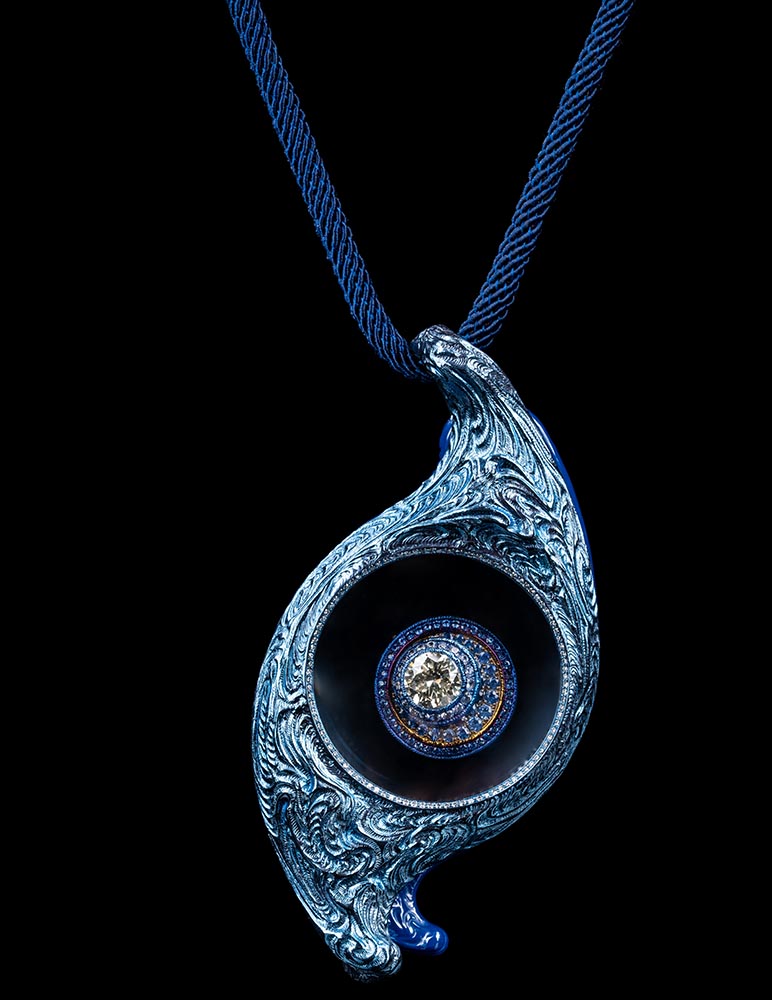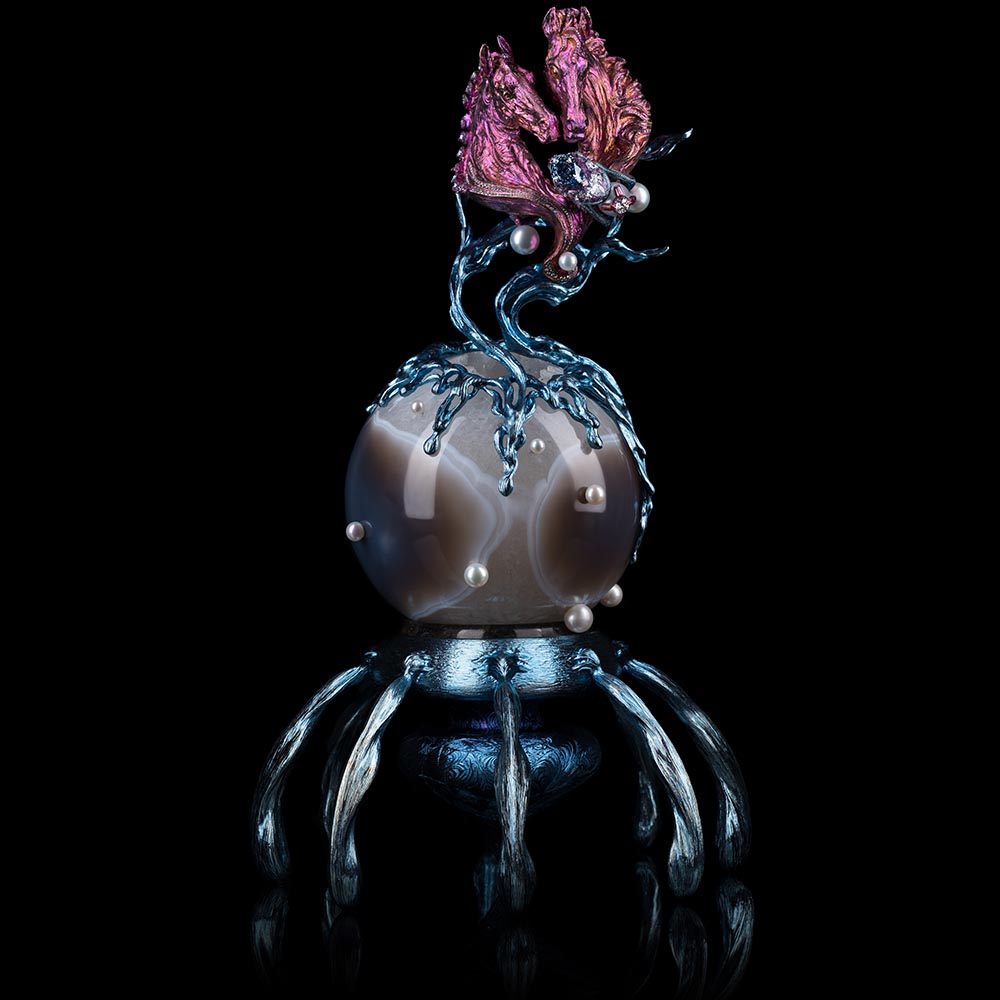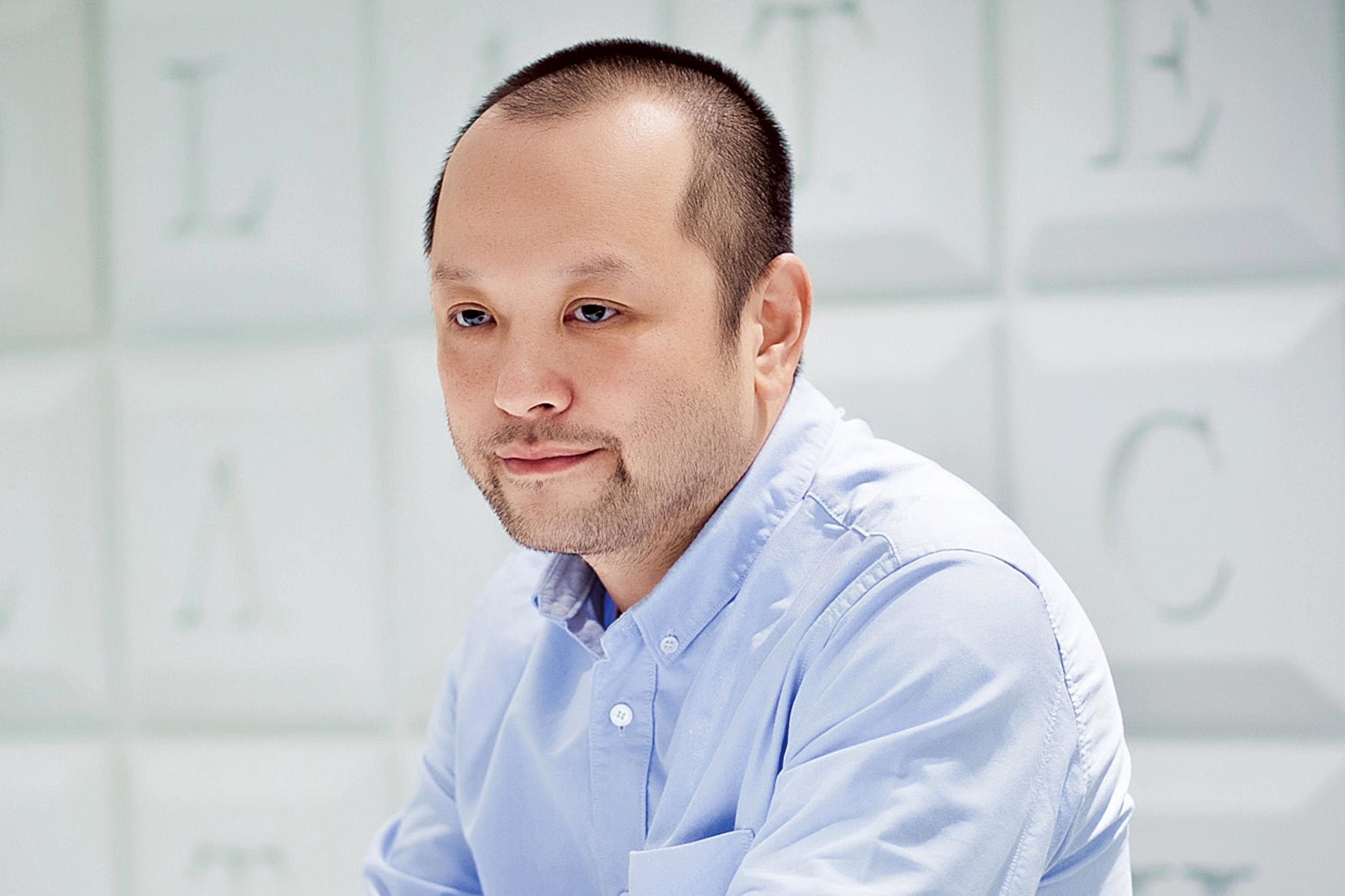












LP Exclusive

In Their Own Words (Part Two)
PolyU BA fashion students discuss the challenges - and interruptions - of preparing collections for their final-year show, which due to coronavirus concerns, has been ‘refashioned’ into an exhibition at PolyU Fashion Gallery
In Their Own Words (Part Two)
PolyU BA fashion students discuss the challenges - and interruptions - of preparing collections for their final-year show, which due to coronavirus concerns, has been ‘refashioned’ into an exhibition at PolyU Fashion Gallery
People > LP Exclusive |
In Their Own Words (Part Two) ...
August 5, 2020 / by China Daily Lifestyle Premium
Related: Show and Tell; PolyU Q&A (Part One)
Connie Luk Tsz-ting
Connie Luk Tsz-ting
Describe your collection.
Multiverse is a unisex collection with green-blue as the main colour, with orange and iridescent hues as highlights, which creates contrast and different spaces. For construction, 3D printing is used in various shapes and scales for the circle in each outfit, which reflects the different versions of worlds, like the multiverse. Allowing different fabric choices, 3D printing is applied on the belt, vest and hood.
What was your inspiration?
This collection is inspired by the multiverse that cannot be seen. In fact, there’s a strong connection between different times and spaces. You can feel it and imagine it in hyperspace. In the multiverse, gender is not a restriction – you can be anyone you imagine. Through the surrealism and the unisex style, you can experience infinity and beyond.
Did the events of this year impact your designs in any specific way?
Given the consequences of COVID-19, there were difficulties in the flow of making garments. The mainland factories were closed for a few months, which caused delays in buying fabrics and sewing garments. On the other hand, since 3D printing is one of the main elements in the collection, the time was less restricted for getting the fabric, which is one of the advantages of using this technology. I think 3D printing can be developed even more in the future in the fashion industry.
A pair of futuristic looks from the unisex Multiverse collection
Who’s your favourite designer?
Jun Takahashi, the Japanese fashion designer and director of Undercover, is my favourite. I admire his talent for putting different elements, colours and layers into contemporary and functional fashion design, especially in using digital printing and contrasting colours. On the main body, his printing develops fascinatingly through graphic patterns, artistic styles and photos.
Where do you position Hong Kong design on the international scene?
As a consumer society, Hong Kong focuses more on commercial design. Sometimes creativity is restricted, and resources for designers aren’t sufficient. It’s hard to get support here for innovative ideas, materials and learning environments in terms of creativity. The best way to push Hong Kong design on the global scene is to get more exposure for innovative local design, both overseas and on the mainland. Most importantly, we need a better learning environment for creativity and design.
What sort of customer are you targeting with this collection?
The target customer is unisex, 20 years and older, who could be a backpacker, an explorer or just about anyone. They pay attention to fashion and functional details, and enjoy exploring the unknown.
Heidi Leung Hoi-ting
Heidi Leung Hoi-ting
Describe your collection.
The Extreme Storage collection was designed with six outfits in womenswear and knitwear, inspired by the urban phenomenon of extreme storage, combined with Hong Kong granny style. I’d like to present the daily life of an ordinary Hongkonger, in which each outfit is an interpretation of different circumstances or places. The aim of the collection is to capture and express my appreciation for these valuable, authentic lives in Hong Kong culture and reflect this overlooked original appearance of the city. Inspired by the layered and baggy storage structure of the extreme accumulation of random objects, the collection is a combination of various knitted structures, materials and textures, with contrasting colours and voluminous garment silhouettes. The upcycling of unwanted clothes, bedsheets from my friends, discarded items and industrial straps also featured in the collection.
A distinctly Hong Kong look from the collection
What was your inspiration?
I like wandering around the older districts and filming interesting stuff in my leisure time. That’s how I found my inspiration – “extreme storage” is a living solution that’s considered to be an “art of survival” in highly dense Hong Kong. With limited space, citizens creatively utilise the utmost amount of their space for storage. We can find this art of survival in our homes, wet markets, urban back alleys or any hidden corners in this concrete forest, which reflects the social realities and the lives of ordinary Hong Kong citizens. It’s an authentic and unique lifestyle that should be retained under this globalisation. I hope this collection can change the public’s negativity towards the “messy” phenomenon of extreme storage, raise people’s awareness of things that are around them, and have them appreciate the unique lifestyle and culture of Hong Kong.
Did the events of this year impact your designs in any specific way?
The events this year have slowed our whole process. For knitwear students, we need to knit our own fabric. The suspension of PolyU in November was so sudden that all my yarn and fabrics were left in the studio, so the whole process stopped. In January, I went to my sponsor factory in Ningbo for ten days. I discussed my swatches with the artisans and ordered a bulk amount of yarn. Then, after Chinese New Year, the outbreak of COVID-19 led to the suspension of my sponsor factory. The progress was hindered again, as I left all the yarn I couldn’t knit at school. It was a tough year for us, but this period of time allowed me to slow down, think deeper and refine my designs.
Who’s your favourite designer?
Recently, it’s Marine Serre. She manages to maintain a good balance between her own aesthetic and commerciality in her design. I believe that a designer should have a story to tell and has a responsibility to promote sustainability. She raises environmental issues like radiation and oil spills through her collections, and uses upcycling materials and vintage garments in her designs, achieving eco-sustainability.
Where do you position Hong Kong design on the international scene?
In my opinion, Hong Kong design has been stagnant without any major breakthroughs in recent years. Not many local designers can reach the international market. Japanese, Chinese mainland and South Korean design is growing and getting global recognition. I feel like most Hong Kong people are quite resistant to new ideas and designs, and just follow trends.
What sort of customer are you targeting with this collection?
I’m targeting those who are enthusiastic about art and culture, and like retro and vintage stuff. Their hobbies include collecting and photography. In addition, it’s for people who pay attention to their own community and identity.
![]()
Leung’s mood board
Final line-up sketch for the Extreme Storage collection

PolyU Q&A
Fashion students Topsy Yu Cheuk-lam & Charmaine Lam Ching-hei on their collections and inspirations
PolyU Q&A
Fashion students Topsy Yu Cheuk-lam & Charmaine Lam Ching-hei on their collections and inspirations
People > LP Exclusive |
PolyU Q&A
July 22, 2020 / by China Daily Lifestyle Premium
Related: Show and Tell; In Their Own Words (Part Two)
Topsy Yu Cheuk-lam
Topsy Yu Cheuk-lam
Describe your collection.
“Morning Moon” is an autumn/winter 2020 womenswear collection, inspired by the Chinese character 曌 (zhao). This was the name of Wu Zetian, the only female emperor in Chinese history, who ruled [unofficially] during the Tang Dynasty. “Zhao” means that she was just as majestic as the sun and the moon in the sky. With exceptional abilities and dauntless courage, she became the most powerful woman in China.
“Morning Moon” uses a romanticism style to capture the uniqueness of fashion in the Tang Dynasty to build the image of empowered women. In the collection, the design details focus on an exaggerated silhouette and layering. Combining ancient and contemporary elements, this collection presents a unique style that emphasises the balance of feminine and masculine energies. A range of textiles have been developed by using different embroidery techniques – such as foam, 3D and water-soluble embroidery – to produce a trendy, elegant effect and offer bold visuals. Also, some of the embroidery designs attempt to evolve traditional Chinese patterns, like the dragon and phoenix. The pattern is deconstructed and reconstructed to produce an eye-catching textural effect.
I think women should be their own warriors. They don’t need to be sturdy like man; they can still be gentle and elegant, but they must remember to keep their mind and heart as hard as a stone. Faith and spirit have to be strong enough to get through all the challenges in life. This collection is expected to show the spirit of a powerful woman who fights for her life and dreams.
Morning Moon Outfit 2
What was your inspiration?
I loved to read biographies about women in Chinese history when I was little. Wu Zetian was the first biography I ever read. She’s my favourite historical figure in Chinese history and her story inspired my collection a lot. Wu Zetian was the most powerful woman and she ruled China for 14 years. In the previous dynasty, the concept of feminism didn’t even exist and women had no right to rule. She created different forms of Chinese characters and renamed herself Wu Zhao. The structure of “zhao” (曌) combines three different Chinese characters. In the upper part, there are two radicals: the sun (日) and the moon (月). Both of these preside over the character “space” (空) below. In ancient China, the sun stood for men and the moon for women. Wu Zetian was an ambitious woman and wanted more power. She didn’t want to hide behind the curtain, hosting audiences with the emperor; she wanted her glory to shine bright to the whole world. A woman like Wu Zetian with such power threatened the establishment, but she broke the old rules and fought for her fate.
The fashion of the Tang Dynasty also inspired me a lot. It established dress politics, and the evolution of this system set new fashion and aesthetic standards for women’s dress. Womenswear in the Tang Dynasty was beautiful and remarkable in feudal society. It was colourful, bold, luxurious, elegant and grand. The main trends of womenswear in the Tang Dynasty were from concealment to exposure, from simplicity to complexity, and from simplicity to luxury. Womenswear in that era was a bold development in traditional clothing. Its openness and novelty showed the woman’s personality of pursuing fashion and being bold.
Have the events of this year impacted your designs in any specific way?
The coronavirus crisis has affected my collection. I’ve had to face a lot of pressure and difficulties; this year is a challenge for every design student. For example, many fabric stores in Sham Shui Po reduced their opening hours or closed entirely due to the coronavirus. It was challenging for me to purchase materials. So I needed to reserve more time to prepare materials and reschedule plans. When there are any situational changes, I’ve had to find ways to tackle all the difficulties. My plan has had to keep changing, and I’ve felt tired and frustrated, but I have to keep my faith until the end.
In my collection, I’ve applied various embroidery techniques. I had many ideas, but none of the embroidery factories in Hong Kong could do what I wanted, so I had to find them in Mainland China. Without face-to-face communication, I had to contact the technician through a mobile app and it was hard to explain my design to him. As a result, production schedules have been significantly slowed and hampered by social-distance constraints.
Morning Moon Outfit 3.3
Who are your favourite designers?
My favourite fashion designer is Lee Alexander McQueen. “I want people to be afraid of the women I dress,” he once said. He created women into a femme fatale image. They looked so dangerous – but attractive. As evidenced by his tremendous work, he indeed maintained his savage beauty. He had his own sense of beauty, and his inspiration came from darkness and twisted stories. His design concept was evil but romantic, and his designs were a new form of strange, violent dreams; he was a remarkable designer. He found himself operating on the edges of darkness, attempting to respond to an often inhospitable world with cloth, trying to break the general rules and express his own emotions. He told his story through every design detail and used unusual ways to express his thoughts that went against the ordinary sense of beauty – he was trying to discover the beauty in the things that we missed.
Where do you position Hong Kong design on the international scene?
Hong Kong is an international city with a historical background. The city is the crossroads, where East meets West. It’s a hub for international trade and cultural exchange. I think the fashion in Hong Kong is rising to a new level and I think Hong Kong has great potential to become the trend leader in Asia, even on the international stage. In recent years, HKTDC has organised many fashion activities to present designers’ works and gain more global exposure, such as Centrestage, Juxtaposed Fashion and The Hong Kong Young Fashion Designers’ Contest. Some of the Hong Kong designers have also been invited to participate in the New York and London Fashion Weeks. This can showcase Hong Kong’s creativity to the world. There are many talented and passionate fashion designers here who have their ideas and messages to convey, but many lack the opportunity or the money to build up their own brand. [On the press tour for A Star is Born], Lady Gaga said something like, “There can be 100 people in a room and 99 don’t believe in you – all it takes is one person.” I believe every fashion designer in Hong Kong needs their own Bradley Cooper to make their dreams come true.
Reports of fashion brands closing shop have become more frequent as the coronavirus continues to batter retail sales in Hong Kong, meaning the shopping choice of fashion garments will be reduced. I think it may be a great chance for Hong Kong designers to develop their own brands and facilitate the development of the Hong Kong fashion industry. I believe the young fashion design students and designers can bring out the charm of the Hong Kong fashion arena and present it on an international platform.
What sort of customer are you targeting?
I love power dressing, and I want my women to look aggressive and independent. I want to build a new image of empowered women. I believe fashion is a type of armour and a protective layer for women. Therefore, my work is designed for strong, powerful and ambitious women. The age range for this collection ranges from 20 to 40 years old. They’re successful women or celebrities, such as actresses, singers and fashion influencers. They’re interested in art, fashion, photography, music and film. Their personality is probably persevering, passionate, polite and confident. Their lifestyles are artistic, comfortably edgy and aesthetically focused. They’re addicted to feminine, romantic, elegant and bold styles. Alexander McQueen, Peter Do, Dior and Celine are their favourite brands to build their style.
Charmaine Lam Ching-hei
Charmaine Lam Ching-hei
Describe your collection.
“One of a Kind” is an autumn/winter collection for men and women, inspired by the formation, regulation and attire of a cult. A cult is a group of people following an identical ideology and ritual practices centred on sacred rules and customs. Cult members are required to follow the rules set by the cult leader with absolute obedience and infatuation. These rules extend to the member’s daily activities, behaviour, attire and even their ideology – all in an attempt to weaken their independent individual. For instance, they’re required to dress identically, down to the exact colour and silhouette. They are one of a kind – yet incomprehensible.
This collection focuses on the integrity of the cult by uniform colour, fabrication and silhouette, coordinated with the use of hand-embroidered, knitted and woven items. It values meticulous and delicate craftsmanship. The mental struggle and contradictions are implied in the knitted items and the hand-made textured textiles, which were made by tearing the fabric into strips and sewing them onto the base fabric, one by one. Meanwhile, the regulation and infatuation of the cult is implied by hand-embroidered textiles, inspired by the rules of the actual cult and the resistance in Shakespeare’s love sonnets. There are some interesting rules hand-embroidered on the fabric, which were set by real-life cult leaders such as no party, no movie, no ball game and no Santa Claus.
Some of Shakespeare’s love sonnets were selected to represent the relationship between the cult leader and the followers. These embroidered textiles were hand-stitched, which took a great deal of time and effort. But patient work makes a fine product and I believe hand-embroidery can never be replaced by computerised embroidery machines, as it’s more vivid.
Outfit 2.2
What was your inspiration?
My inspiration comes from many things, such as movies and exhibitions. The movie The Other Lamb is about a girl who’s born into an all-female cult led by a man, and follows the process of beginning to question his teachings and her reality. This movie captures the regulations and infatuation of a cult. All the cult members are dressed in purple and black, as they worship and surround the cult leader. I was inspired by the unified nature of the cult’s uniform and its operation, and transferred this idea into my collection.
Adam Fuss is a British photographer known for his ethereal photography techniques, which involves getting the image by directly placing the object on light-sensitive paper. These techniques are packed with spiritual and poetic feelings. One of his most well-known series, My Ghost, is composed of X-rays of the modest styles of children’s clothing. The main body of the garment after the processed photograph is transparent, while the details of the embroidery and seams are exposed, which gives it a ghostly, spiritual sense. Inspired by the mood and this X-ray style of clothing, my collection uses some transparent fabrics such as organza to represent the spiritual and poetic admiration of the followers towards the cult leader.
Chiharu Shiota is a Japanese artist who explores human existence in different dimensions through installation, drawings, sculpture, photography and video. The signature of her work is the utilisation of large-scale threads. For example, white dresses hang in a room full of a bundle of black threads. The contrast between these dresses and the thread is strong and dark, which vigorously builds a spiritual impact on the environment.
Inspired by the mood, this colour tone was adopted into my collection. As far as texture, the bundle of threads are intertwined and trussed up, offering a sense of tattered messiness. The environment is entangled by the threads, similar to the fission in the follower’s mind. The inlay stitches inspired me to create the shabby look of cloth. In addition, the embellishments such as raw edge trimming and embroidery are implied in my collection.
Thread process on the blazer inlay
Have the events of this year impacted your designs in any specific way?
The events of this year have seriously impacted production and execution. Firstly, for fabrication, there were limited choices for yarn and fabric. Since most of the factories stopped working due to COVID-19, some of the yarn was out of stock or wasn’t ready for sale. So the selection was narrow for the best texture, colour and handling, which affected the outcome of the design. Moreover, I had to increase the proportion of woven fabric in my collection to replace some of the knitted items. But for woven fabric, some of my desired fabrics weren’t able to ship to Hong Kong. Originally, I was going to order from overseas; however, the airlines stopped and the shipping had to be delayed, which forced me to use whatever was readily available in Hong Kong.
Secondly, as far as timing issues, these events affected the duration of production and shipping. Most factories had to shut down for a few months and they piled up with orders. The factory not only had to produce my knitwear items, but their own orders as well, so they couldn’t meet the planned schedule. Moreover, the shipping was delayed and prolonged, which limited the time for retouching and processing before the submission. Given these situations, some students weren’t able to submit their projects on time and lost the opportunity to join the contest.
Thirdly, for execution, the format to showcase our final-year project has been highly affected by the events. In the tradition of the PolyU graduation show, we’re usually able to showcase six outfits for each collection – but we could only produce three outfits for each student, given the situation in Hong Kong. The format of the show has changed frequently, with a lot of uncertainty and things out of our control that left us not knowing what to do. Luckily, the school has been trying its best to conduct the graduation show to showcase our work.
The intricate embroidery process on the knitted blazer
Who are your favourite designers?
My favourite brand is Ann Demeulemeester. Most of her work is influenced by gothic, punk and cult styles. In the early days, her design focused on layers, draping, styling, patterns and fabrics with a consistent gothic style. After the French designer Sébastien Meunier took over the brand, he kept the design element of the previous collections and created some beautiful work. He focused on colour, fabric combinations and cutting – for example, black and white, lace and modern design details. What’s more, I admire Ann Demeulemeester for its strong brand image and styling, which is poetic and elegant on both menswear and womenswear. Its designs are flowy and feature draping with modern cutting. I’m impressed by their anti-fashion design – and that a collection created 20 years ago can still look fresh now.
Where do you position Hong Kong design on the international scene?
Hong Kong design is getting noticed on the international scene at competitions and Fashion Weeks. Yet, the Hong Kong industry has limited fashion social intercourse or a platform to showcase our work, so it’s difficult to get recognised. What’s more, support is vital to designers. I think Hongkongers should give more support for autochthonous design to assist and facilitate the exposure of our designers on the international scene.
What sort of customer are you targeting?
I’m targeting men and women who enjoy wearing dark and moody styles of clothing, and who admire delicate craftsmanship details. The target age is around 25 to 50 years old. They may show interest in art, with an urban and contemporary lifestyle. Their psychographics should be creative and independent, and they’re quick to reject fast-fashion.
![]()

Seventy-Six Days And Counting
Exclusive: Arnauld Miguet and Gaël Caron of France Télévisions were among the only Western journalists in Wuhan during the entire 76-day city lockdown. Miguet, Beijing-based head of the station’s Asia bureau, shares his first post-lockdown interview with CDLP
Seventy-Six Days And Counting
Exclusive: Arnauld Miguet and Gaël Caron of France Télévisions were among the only Western journalists in Wuhan during the entire 76-day city lockdown. Miguet, Beijing-based head of the station’s Asia bureau, shares his first post-lockdown interview with CDLP
People > LP Exclusive |
Seventy-Six Days And Counting
May 6, 2020 / by Philippe Dova
How did you start those 76 days?
We arrived on January 22nd, just before the lockdown, which must have been a shock for everyone. We learned just like everyone else that the city was going to be contained, and the announcement came around two in the morning on the 23rd. From then on, it was all surreal scenes of a city that was cut off from the world and where everything stopped. Ultimately, we experienced it with incredible astonishment and a fresh perspective on it all. Now, everybody is used to it because it has happened in other cities in the world – but it was quite surreal and anxiety-provoking not to hear a noise in the city, not to see a car, not to see anybody.
Why did you decide to stay in Wuhan?
For two reasons. The first was a journalistic reason: the start of the epidemic that became a pandemic was happening there, so journalistically speaking, that was obviously where we had to be. I’ve always thought that China is the country of the future and that one could read the future from China, and it turns out that what happened in Wuhan happened later in Southeast Asia and then in Italy, Spain, France and the United States. We didn’t know it at the time, but journalistically speaking, it turned out to be an incredible experience. I think we made the choice to stay to witness and explain everything that was happening, which was absolutely out of the ordinary – and remains that way.
The other reason is that Gaël and I are correspondents in China; we are there to cover and relate what happens in China, so we had no reason to leave and be repatriated to France. We live and work in China, and it was therefore normal to stay and cover this exceptional event. It’s no longer exceptional today, since many other countries have been affected, but journalistically speaking, I don’t see how we could have left. We do this job for better or for worse. Sometimes there are light, playful subjects, but this time it was a serious subject and we had no reason to leave.
“I’ve always thought that China is the country of the future and that one could read the future from China, and it turns out that what happened in Wuhan happened later in Southeast Asia and then in Italy, Spain, France and the United States.”
The authorities asked me this question several times. First, the French asked us if we wanted to be repatriated – and I always replied that if we were, it would be to our home in Beijing and not to France. The local Chinese authorities asked us the same thing – if we were going to get on the plane. I asked them if they would come with us. They said, “No, we live in Wuhan.” And I told them that we were going to do as they were, to live in Wuhan and die if necessary – without any reason for us to die, anyway! In a city of 11 million inhabitants, we knew that this disease was going to affect many people, but it wasn’t going to kill everyone. It’s like in La Fontaine’s fable The Animals Stricken with the Plague – they were all affected, but not all of them died. So I told the local authorities that we would stay with them in Wuhan.
What did – and do – the Chinese people you met think about the management of the crisis in other countries around the world?
There are a lot of people who are obviously worried about what can happen in other countries of the world. The cordon sanitaire placed around Wuhan probably halted the spread of the disease, but it didn’t completely stop it since it became a pandemic. Many people are appalled by what is happening elsewhere because it has already happened in China – and probably not enough attention has been paid to the silent cry of the people of Wuhan, who first suffered in the flesh, with people in their families who got sick or died.
Then we found out that this disease made its way to Europe and the United States, whereas since December it has been affecting China. Not enough attention has been paid to the Chinese people. It’s often something that comes back around. What also comes back around is that ultimately, the Chinese methods – aside from some countries like South Korea – that have been applied in Italy or France are the methods that the Chinese used. This was when it was thought that the specific way to stop the epidemic was strictly Chinese and could only affect China for various reasons. Containment methods are common-sense methods; the wearing of masks is nowadays applied almost everywhere in the affected countries in the West. There are many Chinese people who today say that the danger comes from elsewhere.
Read More
Compared to what you lived through and reported every day, how do you feel about the coverage by other Western media outlets that weren’t on the ground?
We had a lot of work to do and didn’t necessarily have the time, working like crazy on the overflowing news. Everyone wanted to know what was going on in Wuhan. So we didn’t have time to watch what was being broadcast on the other channels. There must have been some aberrations and some mistakes, but I won’t blame anyone. We were focused on what we were doing.
What was your relationship with the local media in all of this?
We have had very little communication, actually. Wuhan is a very big city. Even in those times of absolute containment, when there was nobody in the streets, by definition we didn’t meet many people. We never met the local media. We had some exchanges with CGTN and we exchanged some contacts with CCTV when they arrived in much greater numbers around the middle of February. They were positive exchanges with people from the CCTV group. But we weren’t necessarily looking for the same stories, so we didn’t really cross paths.
What were some of the moments that left the strongest impressions?
The most surprising moments were obviously the first days of the absolute closure of the city, when we didn’t really
know what was going on. There was also this moment of panic on January 23rd at 10am, when the phones were ringing all over the place because there were people trying to escape from Wuhan all day long – with some rather tragi-comic moments with people who were using small roads and who finally found themselves, after having managed to get out of the town, stuck in fields because they had taken secondary roads or even dirt roads. It was the fear of being locked up.
One tragic moment for me was certainly this image of a husband and wife who were both intubated in a hospital. They were among the first patients, both in their 70s or 80s. They looked at each other, with tubes all over the place, and the husband said a last goodbye to his wife because they both knew they were probably going to die. It was one of the most poignant episodes I have ever seen.
Then there’s this other image of a little boy who must have been five years old. At the very beginning of this confinement that lasted 76 days, his grandfather said, “We mustn’t go out because there’s an invisible killer in the city and we have to stay in the apartment.” One day, a man came to take temperatures in the building, as was done every week. He knocked on the door and asked the little boy where his grandfather was; the little one answered that he was is in the bedroom but wasn’t moving. What’s tragic is that the grandfather had been dead for five days – and certainly not from the coronavirus. But the little boy continued to hear his grandfather’s words telling him not to go out, so he didn’t go out for five days to tell someone. He ate cookies next to his dead grandfather’s body. It’s a very, very sad thing, and it’s part of this Wuhan tragedy that will sadly mark this city for years to come…
Were there scary moments for you?
There was one very high point and that was when we went to one of the hospitals in the emergency department, where they were treating the people most affected by the coronavirus. It’s the wing of the hospital that was inaugurated by President Jacques Chirac as part of the Franco-Chinese medical cooperation. Dr Zhao Yan, who is in charge of this unit, showed us around this emergency department and told us that most patients have a 50% chance of survival – and that if they were in another hospital in the city, they would probably already be dead… This is particularly poignant and sad.
It was a very difficult moment – from a journalistic point of view, exciting to be able to enter a hospital, but also scary on the other hand. We were made to put on two layers of suits, two pairs of gloves, hairnets, masks, visors… it’s always quite worrying. Dr Zhao told us that since we were obviously in a “virus nest”, we were only going to stay 20 minutes and after that we would have to leave for our own safety. We filmed and did interviews, and when I looked at the clock, I saw that 40 minutes had passed. I asked him if it was okay; he looked at me and I imagine he had a big smile on behind his mask, saying “Yes, don’t worry, it’s okay.”
What was quite impressive – and again quite incredible – was all these doctors and nurses who worked night and day, who slept in the clinics and hospitals to take care of all these patients. They told us that at the beginning, they wore adult diapers to keep them going for eight hours straight; to stay on deck, they didn’t eat or drink so they didn’t have to go to the bathroom – and that was so they didn’t have to change their suits, because if you take the suit off, you have to throw it away and put on another one.
At first, they were short of materials. They weren’t well-prepared. I found it to be absolutely incredible courage and self-sacrifice; they were dedicated in this war to fight this disease. Truly men and women of courage, of honour – it was very touching for me. I had read that they lacked protection, and I told them that it was perhaps unreasonable for us to do this story and use this equipment to protect ourselves. By then, the hospitals had been supplied with equipment and they told us that there was no problem.
Did you feel you were in danger?
To quote Sartre: “Who is not afraid is not normal.” In danger, no; worried, sometimes yes. I was especially afraid of having a high temperature. One day, I had a fever and I was very, very, very afraid of being taken into one of those fever clinics and becoming a danger to others. That was the only time. We were very careful; we wore masks, washed our hands regularly, kept our distance from people and didn’t go out for too long. We were a bit like prisoners who escaped from prison, thanks to our press cards that allowed us to circulate, but we weren’t contained like the other 11 million people. So there was no fear, but a little anxiety from time to time…
How about some of the funnier or happier moments?
There were funny episodes, like this little boy who was five or six years old. He didn’t understand why he couldn’t go out on the street during the lockdown and his parents told him that there was a very nasty virus out there. He said, “I want to go out and play with the virus, it looks fun!” It always makes you smile, even though deep down it’s a little sad.
I was expecting the reopening of the city to be much more joyful, that there would be a lot more jubilation in the city. But it turns out that the release has been gradual and there are still many people who are afraid to go outside. There’s a little girl who is 12 years old and since April 8th, her mother has been trying to get her to go out. But she doesn’t want to go out and always finds an excuse to stay at home. It’s a bit scary. I hope it will pass. We are creating this homebound generation of people who are afraid to go out – and it gives you a bit of a chill.
Many have called the Wuhanese people heroes. Do you agree – and do you consider yourselves heroes in your profession?
It wasn’t only the people from Wuhan, but also all the inhabitants of Hubei, who paid a high price. Some 58 million people were cut off from the world all at once and then locked in their homes – and sometimes for two weeks straight, with a very strict lockdown and the impossibility of leaving their homes at all. They still paid a heavy price. They were particularly affected by this epidemic and of course it’s quite heroic. They did it with self-sacrifice, with diligence, with an absolutely incredible awareness of the danger, which is quite commendable. There wasn’t a single person on the streets and when they were asked to stay indoors, even though obviously a few people tried to rebel, the instructions were nevertheless respected. Staying indoors for so long is very abnormal.
The heroes in the city were not only the doctors, the nurses and all the people who worked in the 50 or 60 hospitals in the city day and night, but also the drivers, many of whom we met. They took incredible risks in transporting the sick and transporting civil servants. The city’s deliverymen were the lifeline; they brought food or medicine to the people who were confined in their homes. Yes, these people are truly heroes because they took risks. They did it for others, even if there were also some who were requisitioned.
The doctors and nurses who came from neighbouring provinces are also heroes. You have to have courage, because when you go into a hospital or one of those fever clinics, you feel like you’re pushing on the devil’s door… That’s where the killer virus is, so it’s obviously heroic and commendable.
To this day, sincerely, I am still moved. I went into a hospital today and the nurse at the reception desk, though you could barely see her face because she was covered from head to toe, you could still feel her smile. It was less tense than it might have been at the beginning of the epidemic. I left after asking her my questions and turned around and said, “Thank you for everything you’ve done.” I almost wanted to hug her, because it’s obviously very moving to see all these people who have dedicated themselves day and night to saving lives and saving the sick. After such a shock, such a tsunami, such a war, it’s very moving. You want to take them all in your arms and give them a smile – unfortunately you have a mask on and you have to keep your distance.
Do we consider ourselves heroes? Certainly not. I think we are doing this job, again, for better and for worse. We cover lighter subjects, like a visit to the colourful mountains of China, but we are also here for tough stories – for a war that doesn’t have a name, with an invisible killer in the city. And we also tell those human stories that are tragic, that show the gift of oneself and the beauty of humanity, because this virus is a crime against humanity. We simply did our job. I hope that tomorrow’s subjects that we will work on will be lighter and more fun.
One week before going to Wuhan, we were in Bali to do a report on bamboo culture: bamboo houses, bamboo T-shirts... For sure, we’re now in a completely different register. But that’s the beauty of this job – entering different universes. This universe of Wuhan at the time of the coronavirus is a universe that we’ve never seen (and that we’ll never see again, I hope), but it is absolutely incredible. It is an experience that will mark us for life, and that we will tell our children and grandchildren about.
Is there a book in preparation about your experience?
I’ve received requests from publishers, but I haven’t answered any of them yet. It’s true that we still really want to tell this story, but the television format, even if we made the stories a bit longer, for about 34 minutes, doesn’t necessarily allow it. We want to extend and tell this story in a long format – so why not in a book? We’ll see… For the moment, the plan is to rest and move on to something else after 84 days.
Before going back to Beijing, I’ll try to walk around the city of Wuhan to see something else. It’s nice to see traffic jams and people in the streets again, to see the different traces of the rich history of this city, to see the Mao museum where he crossed the Yangtze, to see the different Russian and French-British concessions, to do a bit of tourism. There’s a time when we’ll have to leave, but at the same time, the period of reopening is almost as interesting as the much darker period of lockdown. This reopening is also reading into the future as we watch what will happen in France, Europe and the US.
It’s a very interesting period indeed. It’s interesting to see the number of marriages, divorces and pregnant women, to see how these people who have been traumatised – or not – mark this return to normal life. And then obviously, from a medical point of view, to be able to learn from what the hospitals and doctors in Wuhan have been able to experience, and to see how they have solutions for France, Europe and the United States to fight the virus. China has a lot to share with the rest of the world.
![]()

In the Stars
To spend time with stadium cosmologist Brian Cox is to make human beings reconsider their status – although tiny and fragile and finite in this infinite universe – as ecstatic and random rock stars of the galaxy
In the Stars
To spend time with stadium cosmologist Brian Cox is to make human beings reconsider their status – although tiny and fragile and finite in this infinite universe – as ecstatic and random rock stars of the galaxy
People > LP Exclusive |
In the Stars
May 15, 2019 / by China Daily Lifestyle Premium
There’s a remarkable moment at the British Consulate in Hong Kong when, ten minutes before physics professor and TV personality Brian Cox is just about to deliver a promotional speech in front of journalists, a man who spends half his life looking for evidence of creation’s beginning as long as four billion years ago in the cosmos, looks up at the projection screen and says there’s so much light shining through that he can’t see. Is there a blind that can be lowered, he asks? No. “Okay, I’ll do my best, but you’ll just have to come to the show to see these images,” he jokes, with his mix of wild-eyed, disciplined-mind, boy wonder-esque persona. Cox is referring to his “stadium cosmology” performance, the Professor Brian Cox Universal World Tour, which will land in Hong Kong on June 5, and also visits Singapore, New Zealand and Australia.
In person, Cox burns like a comet, enlightening eyes and minds by the nanosecond. He uses state-of-the-art graphics and imagery from telescopes and space probes in his show, with ultra-high-resolution LED technology helping explore the latest missions to planets, the nature of space and time from the Big Bang to black holes, and the origin and fate of life and intelligence in the universe. He even “journeys” around and into a black hole. “On this new tour, I’m going a step further with technology,” he says. “And I hope it’ll offer people a completely new perspective on our place in the universe.”
A former pop star of the 1980s and ’90s, Cox is today a professor of particle physics at the University of Manchester. He’s also an author, most recently of Universal: A Guide to the Cosmos (with Jeff Forshaw), and a broadcaster, known for highly acclaimed BBC science programmes. Cox combines the best of David Attenborough, Carl Sagan and millennial thinking in his make-up. In an exclusive chat, we got to know the 51-year-old boy wonder of physics.
Was there a defining science-fiction movie for you, like Forbidden Planet or Creature from the Blue Lagoon?
I don’t think it’s a particularly prescient movie, but one of the earliest great movies I saw was Alien. I saw it in ’79 – so I was 11 – in the film club at school. And I was into spaceships at that time. So I watched it and got the full Ridley Scott.
The one thing that always strikes me about science fiction in those days is that they got the space-flight part wrong. For example, even in 2001: A Space Odyssey, they absolutely overestimated space-flight capability and yet they completely underestimated computing power, which is very interesting. In this respect, cinematically, we have always overestimated our spacecraft, but always underestimated our communication devices and computing powers.
In terms of influence, there’s Arthur C Clarke’s Childhood’s End, which I read when I was quite young. It had a massive influence on me. I just re-read it; it’s really a great book, but also strange and unusual, and there’s one great moment. Although it’s set in the mid-21st century, roughly, and the aliens have come down and mankind is about to perish under a different species, there’s a part where an astronomer forgets the name of a star and he goes to a library to look it up in a book. And you think to yourself – of all the things that will be missed by the year 2050, will a physical library be one of them?
It seems the Chinese invented and thought of just about everything prior to everybody else. What is China’s relationship with cosmology like in history and how much has the West, if ever, borrowed from that?
If you’re talking historically, I don’t think I know. I would have to research that. Something like cosmology is a well-defined science as the large-scale study of the universe. So I would say there’s only one way of looking at the universe. I don’t know about it culturally or what Chinese cosmology was to people living in the 15th century. There are different ways of studying nature. What I do know is that in my field today, China is looking at building big accelerators, which is absolutely along the model of what we’ve been doing. Globally, it’s a very exciting time for cosmology and science generally.
Everything cosmological seems like the search for the Holy Grail. But if you had to single out one area that’s still most thrilling to consider, what would it be?
Dark energy is the one thing still out there. It tells us there may be something very, very profound about the way that space-time behaves – and why the universe is accelerating at the speed it is.
Read More
Where is the centre of the universe?
There isn’t one.
Would you ever consider living on Mars?
No. I’d need some good restaurants. [laughs]
Should we be sending people to Mars?
There are two answers to that and it’s quite political, of course. Space flight is expensive. And if you’re interested purely in scientific research, then I think you can send a lot of robots, because you can get more of them.
But, it’s also true that human capability is far in excess of robots, so we need that. Most scientists would say they don’t like space flights because it removes a lot of money from their activities.
On the second point, we’re going to Mars because there is nowhere to else to go. Not to the other planets, so we have to stay here, or if we go anywhere, to Mars. But I think as a civilisation, we may need to start thinking of going somewhere.
Have you written any children’s books, or will you?
It’s tremendously difficult to write books for children. A friend of mine, Oliver Jeffers, wrote a great children’s book. Every single word and sentence has to be so precisely constructed; it’s an art, a real art. I’ve written for newspapers – you would well understand – and you can have different allowable paragraph lengths, and sometimes the shortest sentences in a paragraph are the most difficult ones to write. I would love to write children’s books, but it’s a skill I don’t have now.
“A lot of people can’t come to terms with what it means to be human without considering the universe. So if there’s anything that surprises me about some people, it is that they don’t really care. But as long as enough people do, we’re okay”
You’re a wine lover. Why not write a book on wine?
I’m a big fan of wine writer Jancis Robinson. For wine, I’m still on the learning curve. I started collecting it to drink, but I don’t collect it as investment; it’s more like a sort of exploration. I like learning curves, so music and wine and other subjects make for interesting diversions. I get bored every five or six years, so science is about the only constant thing. I love red wines, like Bordeaux, but as I’ve got older, I find they are less easy to drink. So I like white Burgundies, and I very much like chardonnay and champagnes, blanc de blancs. It’s a bit niche though, the study of white Burgundy, to write a book about.
Are you more underwhelmed or overwhelmed by the public’s general knowledge of science?
What’s interesting is that the questions are very often the same ones I would ask. That’s what we do with the show. We go straight to heart of the matter and take on very central questions – like why are we are, how did we get here and what should we be doing? And the answer is that we don’t fully know, but we have a vague idea. I can talk about the edge of our knowledge and that raises the questions that we all ask. The important thing about science is that it shouldn’t be separated from other aspects of human endeavour. I think science can be described as a human reaction to nature, and that’s the motivating factor. There’s only one interesting question really, in my view, which is: What does it mean to be small, fragile and finite – to live a small, fragile and finite life in an infinite universe? That, ultimately, is
the only question that I’m interested in.
Physics is like a rule book for the building blocks we encounter, compartmentalising why and how things happen, and establishing reason and fact. But probability seems like the devil’s advocate; it comes along and stirs it all up in ways that are unknowable and unanswerable. Isn’t the very random nature of our existence here what makes our presence on Earth an ecstatic one to celebrate?
There’s a sequence where I say exactly that in the show. Why is the Earth the way it is? It’s a very complex mixture of the simple laws of nature and chance, and separating the two is important if you’re trying to think about our place in the universe. You have to understand there’s a lot of chance involved, which we can’t make sense of. It’s just like blind chance. For example, the asteroid that wiped out the dinosaurs – had that flicked one speck of dust a different way in relation to the solar system, we might not have happened. We wouldn’t be here. About one billion other things might not have happened, either. [laughs]
So you can’t define a human being through the laws of nature, but you can extract from the laws of nature a framework that allows you to think. You’re not allowed to stray outside it. For example, we do know we are very small. But there’s nothing we can do about that. I struggle with that sometimes.
One of your BBC programmes begins with a lovely moment where you examine the beauty of a snowflake.
The inspiration for that came from the 17th century and an incredible work called The Six-Cornered Snowflake by [Johannes] Kepler. It is absolutely brilliant. It’s considered the first book to ever describe the structure of crystals or snowflakes, and I would recommend it anyone and everyone. A courtier is charged by his king to bring the most valuable gift he can find that is close to nothing. So the courtier considers some water, some dust and then the snowflake. “I’ll give you the most valuable gift, which is the closest thing to nothing I can find,” he says.
Kepler is a great genius, with the most amazing mind. Every single question he asks about the universe so long ago is correct.
Do you think of space as having dimensions we can’t conceive of yet?
There are plenty of theories of extra dimensions and we do experiments to find them. Interestingly, one of the ideas about why gravity is so weak is because it has to deal with other dimensions, where other forces don’t.
What would you say is people’s biggest misconception about space?
It’s not a misconception, exactly, but a lot of people can’t come to terms with what it means to be human without considering the universe. So if there’s anything that surprises me about some people, it is that they don’t really care. But as long as enough people do, we’re okay. I remember people used to say to the famous US cosmologist Carl Sagan, “Look at those lights in the sky.” And he’d say, “They’re more than lights, kids – they’re worlds.”
![]()

Angel Talk
Chinese fashion darling Angel Chen has made a huge splash on the global scene – and the burgeoning designer continues to shine
Angel Talk
Chinese fashion darling Angel Chen has made a huge splash on the global scene – and the burgeoning designer continues to shine
People > LP Exclusive |
Angel Talk
February 20, 2019 / by China Daily Lifestyle Premium
Image above: Angel Chen
Acclaimed Chinese fashion designer Angel Chen is distinguished by her colourful approach to style and her aesthetic sensibility that combines East and West. The Shenzhen native graduated from Central Saint Martins in 2014; her placement year included internships with Vera Wang, Marchesa and Alexander Wang in New York. Following her graduate collection, I-D magazine singled her out as one of five designers to watch; Chen debuted her own brand a year later. Part of a new wave of Chinese design talent, she has shown at Milan, London and Shanghai Fashion Weeks, and is stocked at Lane Crawford, Luisa Via Roma and other top international retailers. Now based in Shanghai, she recently took time out of her busy schedule for a candid chat with CDLP.
“I’m a casual person and an independent personality. And I’m bold. The brand represents me. Many girls around me are both beautiful on the outside and independent inside. They can do amazing things – small bodies with great power”
You made your New York Fashion Week debut with the SS19 collection but the city has always been an influence on you.
Yes. I stayed there for a year before I graduated from Central Saint Martins. New York influenced and shaped me a lot. In the city, I discovered my favourite artists. The brand, Angel Chen, is very young and energetic, which I think is a good match with New York and New York Fashion Week.
Describe a typical work day for you in Shanghai.
I usually arrive at the company around ten in the morning. When I get there, about ten people crowd me, asking questions about design details, sales and public relations. We’re now moving our office, so we’re busy with purchasing and decorating. Pop-up invitations, the release of new collections and collaborations take up much of our time. I often skip lunch and usually eat my second meal at around ten in the evening. After I go home, sometimes I work a while, until one or two in the morning, before I sleep.
Artist Jackson Yee wears Angel Chen on the 2018 TV series Street Dance of China
So how big is your team and what do they all do?
There are almost 20 people in my team. In the design department, there are seven people, including me. They’re responsible for ready-to-wear, accessories, graphic design and fabrics. We have production, purchasing and warehouse management departments, people who are in charge of public relations and finance, assistants and a sales team. Now we also have an online operations team. There’s also a garment sample division and a pattern-maker. It’s quite a lot of people.
How did you envision the brand’s spirit when you first launched?
When I started, I had three unwritten rules. Firstly, I hoped our brand would be colourful, without the use of white or black. Secondly, I hoped the brand would feature rich Eastern elements in terms of materials and patterns; we usually combine Eastern elements and Western silhouettes. These collections are suitable for modern people. Thirdly, I hoped the designs could be a good match for people without the boundaries of gender, age or nationality.
What do you think of the trend towards gender-neutral styles?
I’m a casual person and an independent personality. And I’m bold. The brand represents me. Many girls around me are both beautiful on the outside and independent inside. They can do amazing things – small bodies with great power. There are also several talented men around me who understand women’s beauty and are capable of designing amazing pieces.
Read More
Angel Chen x Adidas collaboration sneakers
Who’s your target customer and from which generation are they?
I thought our target customers would be people between 18 and 30, but I was wrong. People in their 60s and 70s also buy outdoor jackets. Later, I realised our customers are from all age ranges. Our target customers are curious, independent people with young hearts.
You recently opened your store on Tianmao aka Tmall, one of the world’s biggest digital retail platforms. How do you see the online/offline challenge for designer brands?
Many independent designers are focusing on offline sales because of the products’ high prices. The main difficulties for independent designers are price issues and the need for support from a bigger team. I wanted to open a digital store to be a successful example to encourage more independent Chinese designers. So, so many people visit Tianmao and Taobao daily because it’s convenient for consumers. Therefore, we have to open stores on Tianmao. I’m pretty positive about the idea.
What discoveries have you made while selling on it?
Tianmao has powerful big-data and a wide range of customers. On this platform, we can analyse our buyers’ ages, work and consumption habits. It’s a great way to help independent designers analyse how successful their products are.
Angel Chen x Sony camera bag
What has been the biggest challenge in operating your own brand?
The biggest challenge is balancing investment and the payback. Running a brand is pretty difficult. A brand can be influential, but it still might have relatively low sales. But I think I’m doing pretty well. It’s pretty difficult to expand a small-scale business to a large-scale one. We will never become a Zara or an H&M; those restrictions were there from the beginning. As independent designers, we pursue an independent style. The materials we use will always make our prices higher, which makes them less acceptable to certain consumers. It’s hard to work on a scale like H&M.
Do you think the growing power of China in the fashion world has helped your career?
Yes, a lot. Actually, many people were against the idea when I decided to go back to China; at that time, Chinese design wasn’t recognised in the international market. But I think now is a great time for Chinese designers. As China is getting stronger, they have more development space – and they are getting better and better.
How do your development plans overseas and in China differ?
In China, we pay more attention to the market and sales. The Chinese market contributes 80% of our sales volume. Overseas, we pay more attention to the branding. We want to enter the best shops and work with the best teams, which can improve the brand’s image.
Why the Madame Ching pirate theme? Tell us about the inspiration for your spring/summer 2019 collection.
Madame Ching was a pirate lord of the Pacific Ocean during the Qing Dynasty. In that period, pirates not only had an impact on the development of coastal regions, but they also played a significant role in fighting enemies. This “anotherness” associated with a pirate’s strong spirit can be seen in Angel Chen’s bold colours, prints and rebellious outlook on fashion.
Which do you find more challenging to design, womenswear or menswear?
Thanks to our bold style, I don’t really find a great challenge in creating womenswear or menswear. However, challenges usually appear in the design of the spring/summer collections and the lighter pieces. Taking the materials as an example, for this collection, the fur and heavy embroidery fabrics, which are iconic to the brand, can hardly be used.
Where would you like the brand to be in five years’ time?
In the coming five years, we will mainly focus on the expansion of the sales channels. We hope to have around ten sales ports in five years, both online and offline. Simultaneously, we will keep launching our new collections internationally to maintain and grow global awareness.
![]()
Runway looks from the Angel Chen spring/summer 2019 collection

Voice of Gold
A leading light in the Chinese music industry, 28-year-old singer-songwriter Huo Zun (aka Henry Huo) rose to fame in 2014 after winning the first season of TV competition Sing My Song with his tune “Rolled-Up Beaded Curtain”. On the eve of the release of his second solo album, CDLP caught up with the rising star
Voice of Gold
A leading light in the Chinese music industry, 28-year-old singer-songwriter Huo Zun (aka Henry Huo) rose to fame in 2014 after winning the first season of TV competition Sing My Song with his tune “Rolled-Up Beaded Curtain”. On the eve of the release of his second solo album, CDLP caught up with the rising star
People > LP Exclusive |
Voice of Gold
January 30, 2019 / by China Daily Lifestyle Premium
Image above: Huo Zun
You’re about to release your second album. What is the theme and how long have you worked on it?
This new album includes so many things – basically my thoughts about music. There will be at least 10 songs on it. I started working on the album two years ago.
The previous album, my first, was released three years ago. In those three years, I’ve been both performing and composing, and certainly my understanding of music has changed in that time. I have met many new friends in the music field and our team has also become more familiar with each other.
Besides traditional Chinese style, what other aspects of your music would you like to highlight for your audience?
If the timing is good, I think I could add rap music elements to my songs. I personally like rap music, but it’s actually not something I’m good at – so I wouldn’t dare to just try. I can’t predict what kind of music I will create in the future, though. I will add it in at the appropriate time and keep on learning.
What do you think of the younger Chinese generation’s taste in music?
Their taste is indeed improving. As the internet has developed, they have access to so many kinds of music. Nowadays, many young people have their own standards, instead of just following trends. And the standards are improving, too. For example, many listeners, even though they aren’t professionals, comment about composing and instruments, which seldom happened in the past.
Read More
Copyright protection is a major issue in China today. What do you think about it?
For all the producers, copyrights are extremely important, as we put our energy and effort into our music. I’m really happy that many music brands are more conscious about copyright protection. Some shows tell me and pay me when they use my songs. It’s more about respect for the music, for all of us, instead of the money. Compared to the US and Japan, China still has a long way to go, but it’s at least on the right track.
When you sit down to compose a new song, where does your inspiration come from?
Composing is a part of my life. It’s my job and it’s really natural for me. Over the years, I have been using my feelings and thoughts to create music. As a producer, I pay attention to rhythm, which I see as the nature of music. Rhythm can be touching. A movie, a book or a fantasy can serve as the inspiration. A new song can even be completed after the lyrics are added. Actually, my main means of composing is on the piano, which was also my friend accompanying me as I grew up. Inspiration sometimes just pops up randomly when I play the piano. This happens all the time.
Your parents, Huo Feng and Zhong Xiaoping, are both famous singers. In what ways do you think they have influenced you?
I have inherited a love of music from them. My parents are now off-stage, but they never expected me to work on music just like them. I think music is in my DNA and it fills my home all the time. Growing up in this atmosphere, I think music naturally became my friend.
What are you like in your personal life? Who are your favourite singers?
I’m just an ordinary person. Singers portray the ideal beauty on stage. I’m not that perfect in life; I’m a real flesh-and-blood person. There is an art side and a life side as well. As far as my favourite singers, Chang Shilei has influenced me a lot, Yuan Yawei [aka Tia Ray] is really talented, and He Jiale.
What are your hobbies?
I like watching animation, playing basketball and exercising. I sometimes buy garage kits and spend an afternoon putting them together. Drinking tea and photography also take up my leisure time.
Describe yourself with three words.
Integrity, genuine, aesthetic.
From what you’ve learned in your singing career so far, what do you think is the key to success?
Before and after entering show business, up to now, I still like myself. I didn’t change into someone I hate, and my passion and love for music haven’t changed. I think virtue is at the root of being a singer. To have a lasting career as a singer, talent is important – but as I see it, virtue is even more critical.
You have worked with famed lyricist Fang Wenshan aka Vincent Fang, who also works in a traditional Chinese style. Can you talk about the collaboration?
I really value this opportunity. Mr Fang is a lyricist who has influenced the whole Chinese music industry and I truly respect him. Even now, I feel this collaboration is so surreal. We share many similarities about the aesthetic standards of music. He’s a knowledgeable lyricist and has great passion for traditional Chinese culture. I have learned a lot from him.
![]()
Images: Provided to China Daily
Back to top

Wallace Chan: The Teacher and The Student
Jewellery designer Wallace Chan brings storytelling, heritage and a surprisingly diminutive teacher to his Christie’s exhibition
Wallace Chan: The Teacher and The Student
Jewellery designer Wallace Chan brings storytelling, heritage and a surprisingly diminutive teacher to his Christie’s exhibition
People > LP Exclusive |
The Teacher and the Student
January 3, 2018 / by China Daily Lifestyle Premium
Image above: Wallace Chan
Wallace Chan is an acclaimed Hong Kong-based jeweller who has attained international success through his innovation in techniques and materials. Born in Fujian Province, Chan found his artistic calling early on, fashioning flowers out of plastic at age eight. At 16, he began an apprenticeship with a sculptor in a traditional workshop for nine months. Over the next 40 years (and counting), Chan has experimented with a wide spectrum of techniques and materials to realise his artistic vision. In the process, he invented a jadeite thinning and luminosity-enhancing technology, and introduced the “Wallace cut” of carving designs within a gemstone. Most recently, he has patented Wallace Chan porcelain, a product said to be unbreakable and five times stronger than steel. CDLP met up with him in his Stanley Street studio on the eve of his new exhibition with auction house Christie’s, Shapeshifter: The Multiverse of Wallace Chan, from January 14 to 25.
Brooch and Sculpture: Stilled Life
Brooch: Imperial Jadeite, Lavender Jade, Ruby, Fancy Colored Diamond, Titanium
Bamboo Sculpture: Crystal, Yellow Diamond, Pink Sapphire
Diamond, Tsavorite Garnet, Titanium
You’ve just created and patented a new type of porcelain. What distinguishes it?
History is always evolving. Porcelain today, compared with 50 years ago, or even 500 or 5,000, is very different. People have been innovating throughout history with porcelain. I developed porcelain with the hope that it could be the backbone of my jewellery – I made it stronger, sturdier and gave it a more unique kind of lustre, so it’s very scratch-resistant as well. Even 50 years from now, you can test it. People develop different kinds of materials to fulfil their needs – porcelain for watches, porcelain for cups and even porcelain on different machines now.
My experience with porcelain began when I was five years old and broke a spoon; my wish was to make an unbreakable porcelain. So that comes from my childhood memories. I’ve been developing a lot of different technologies and innovations; a lot of them were associated with porcelain, like titanium, as well.
This ring, New Generation, which you’re exhibiting at Christie’s, is the first example of its use, right?
Yes. I give this form with the thought that there’s energy inside, expanding almost to the point of exploding. It almost looks a bit sci-fi, or like the muscles or cartilage of a body. And that form symbolises the strength of the porcelain. I like scientific things and sci-fi technology a lot. And science explores what the eye cannot see, so this has been a long-time pursuit of mine. This one is called New Generation and the other in the pair is called Star Light Ballet. The pink one has dancers.
What’s your favourite period in terms of Chinese dynasties and aesthetic inspiration?
I think every dynasty left behind something that inspired people. Some periods encouraged and inspired others to act upon them. For example, Laozi [Lao Tzu] has a book named Daode Jing [Tao Te Ching]. There are only a few words in it, but it’s been an inspiration to a lot of people; it’s like a reference for wisdom. And then there’s [Chinese philosopher] Zhuangzi from the Eastern Wave dynasty and the Buddhist statue, which people looked up to for wisdom as well. And then there’s the Ming Emperor… I think they were all an inspiration. Over the 5,000 years of Chinese culture and history, one dynasty happened after another, one culture was passed down and got mixed – so eventually they’ve all appeared in our daily lives, if only in some small way.
Read More
Sculpture: Om
Rubelite, Titanium
How can we tell good jade from bad jade? How does an amateur distinguish an interesting piece from a less interesting one?
When it comes to jade, people come and tell me they want to buy a piece, and ask how to look at it. The first thing I always tell them is: do not buy jade. I think you should first learn about something before you take an action. Sometimes people bring me raw materials to evaluate, but their dream and their heart is often broken. For example, people think jade is green outside and inside, but in 99.9% of cases, the reality is that it’s not. People who sell jade shine up the brightest parts and make people believe the green will show up inside, but it actually doesn’t. And they show jade under the brightest possible light. But when cut, it’s not green. And the dream is broken.
So jade flatters to deceive, even for experts?
Jade can be deceptive, yes. I learned from my failures many times. When you decide to buy cut jadeite, you have to see it in the morning, evening and afternoon, because the light is different at those times and reveals a different jade each time. Even if you’re someone who is really experienced, you have to bring along a teacher.
Sifu of Wallace Chan
Who is your teacher?
I use this sifu. [He produces a tiny ball of jade, like a marble]. Here is my teacher; it is the best possible quality jade, transparent like glass. This is the jade standard I use when I buy. It’s like a benchmark.
What is the younger generation’s reaction to jade today in Hong Kong and China?
Very complicated. In China, the younger generations find jade a very precious but mysterious material. In Chinese culture, it symbolises life and death. A lot of people place a jade cicada in the mouth when someone passes away. The word “jade” is very interesting in Chinese, too. It symbolises the sky, the earth and the people in-between. When you connect them with one another, it becomes jade, so that’s the wisdom of it. It’s called the “gentlemen’s stone” in Chinese. Over the past couple of decades, a lot more people have owned jade, so the price has risen – and some younger people like jade for that reason.
What is so compelling to you about the world of jewellery?
Gemstones are like memories; they carry the memories of the universe and can help us tell its stories. History is our audience – and the stones are the carriers. We want to have the people as our audience and live through them with gemstones.
![]()
Images: provided to China Daily
Back to top

I.T Boy
Retail boss Sham Kar-wai talks e-commerce, key opinion leaders (KOLs) and crossing the digital divide, exclusively to CDLP
I.T Boy
Retail boss Sham Kar-wai talks e-commerce, key opinion leaders (KOLs) and crossing the digital divide, exclusively to CDLP
People > LP Exclusive |
I.T Boy
November 7, 2018 / by China Daily Lifestyle Premium
Image above: 2018- Dover Street Market Beijing Store Opening
Hong Kong retailer I.T was set up in 1988 at a time when Lane Crawford and Joyce were the dominant fashion forces in the city. Sham Kar-wai’s venture, originally named Green Peace when it launched, brought new street attitude to the gilt-edged avenues and stocked designers such as Comme des Garçons and Junya Watanabe, who were thought to be too avant-garde. On the advent of I.T’s 30th anniversary with a pop-up store in Pacific Place, CDLP speaks with Sham about digital aspirations, the influence of key opinion leaders (KOLs), and why Hong Kong can learn from and interact with China to better promote its creative talent.
Mr. SHAM Kar Wai
You haven’t had a big digital presence for such an influential store – but now you have ITeShop.com and an app. You’re quite late to the game in that respect.
I think it has taken a long time. We are predominantly offline people, so online for us is a new thing, but I think in the future it’s also very important in terms of consumer engagement. Two years ago, we started doing digital in China because in Hong Kong, not that many people bought online compared to China. So we have to be on their social media platforms, otherwise it won’t work. We need to build our official website as well, and recruit people to produce it. I’ve also been able to watch the experience of big brands attempting to launch digitally in China. That market is not our speciality. So we need to accept that, take our time and get it right when we do enter.
Does China’s highly evolved mobile commerce system surprise you?
In mainland China, the technology is more advanced than Hong Kong – and even the rest of the world – so I’m not surprised at the level of penetration and for them to be so dynamic in terms of online shopping. They do everything in a digital way, not just shopping and fashion retail; it’s also about air tickets, the cinema, taxis, everything… a total lifestyle.
I.T is considered cool and distinct. How much harder is it now to be cool in the digital world?
When we started in Hong Kong, it was very easy to reach people because the city was, and still is, so small. In those days, if you wanted to reach the market, you used traditional media and it was all very direct. But when we started in China in 2002, it was a different ball game. Today in China, it’s easier than 2002, and we have a fashion show to talk about our 30th anniversary with TMall. On the other hand, it’s not just that there’s so much information and competition, but that there’s too much information and competition, so you can’t say you are being unique anyone. It’s harder to be outstanding now.
Read More
How do you convey the feeling of I.T’s in-store shopping edge in the digital ecosystem?
With difficulty! That’s why we need to learn. We need to do online specials and offline specials, get more customer integration and find out how to connect people across a 360-degree platform. Before, customers came to the store and did some quick shopping and “bye-bye” – they left. But now we must connect with them, keep them, maintain their interest and build the relationship. We must get them from the internet to our store. It’s much more difficult. Now, there’s almost too much complexity.
Where do you stand on influencers or KOLs. How beneficial have they been to your business?
It’s difficult to predict, because everything is moving so fast now. I think there are a lot of KOLs, not just in fashion, who have influence. Even my daughter looks at KOLs and their Instagrams – she can watch KOLs introduce cooking, cars, all subjects… and I think people like watching this. It’s all about picking the shortest way to get what you want. Before, you went to bookstores and found articles, but today it’s not like that. As for the KOLs, I don’t know if their influence will stay, but they must evolve, like all branding; if they do the same thing, people will get bored. They need to do something different to keep their brand fresh. But it’s hard to say in one or two years, because technology can change taste and that may alter the KOL market in some way. It’s difficult to predict. Right now, for me and for my children, I think we’re still looking at KOLs and following their tastes and their habits to get some information. They can also help people understand subjects.
The kids’ market has been a huge global growth story for the last decade. How do you see I.T’s relationship with that?
We acquired Bathing Ape and Bape Kids in Hong Kong and Japan, and we’ve had great results in our Harbour City store. Also, the China market had a one-child policy, but now it’s open, so that has created opportunities. Today, for example, our parents didn’t spend time on the children in the same way they do now. In China, they really care about their children, so they buy many things and they all know so much more about fashion at a young age. Nowadays, the people protect their children and offer them many things. Also, parents are worried in China and Hong Kong about being judged by other parents, so they want their children to be dressed up and really care about how they look. Bape is doing really well, not just in Japan and Hong Kong; we hope to do more of that in China.
What isn’t I.T doing now that you’d like it to be doing by its 35th anniversary?
I wouldn’t like to say, to be honest. I don’t always look or think that far ahead. And I don’t even like to celebrate anniversaries very much – but you have to do these things today. Because we carry so many brands, there are always anniversaries of one kind or another. We have the Bape 20th anniversary this year and a lot else going on. The calendar is pretty full.
You’ve championed creativity in this market for so long. Why don’t people support or promote Hong Kong’s creative talent more than they do?
It’s sad to say, but I think it’s because of the environment. In the rest of the world, there’s a sense of people doing art and fashion, and being interested in that, as being normal. Such people have been looked up to as a result. But in Hong Kong, it’s too commercial as a city. Our schooling, our training – it’s all about commercial value. In that way, I have a sad feeling about Hong Kong. If you look at Europe, where people say they want to be artists or fashion designers, their parents may not always like the idea, but they will celebrate that creative instinct. Here in Hong Kong, the parents may shout or even not allow their children to make such a choice. The parents will not support them, in general. In that way, there’s no emphasis on creativity. And if you’re an artist in Hong Kong, how can you afford a studio – how will you pay rent to create your work? In China, there are many good artists and maybe that’s because they have more space.
I wish the city would promote the creativity that is here because there are so many creative people. Perhaps it has improved a little of late, I think, and events such as Art Basel have been raising awareness compared to ten or 15 years ago. The sentiment is better. I think it will get better in the future and in this respect, we need to connect more with China and mix with such creative people and talent there – and use that platform to make something different. In China, there are many artists and designers and they are very bold.
Do you collect art?
As you may know, I do collect cars but not really art and not as investment. Maybe something like George Condo or Kaws – it’s trendy and fashionable. Sometimes it’s hard for me to decide, as I’m not a big collector. Some art is also very expensive. It’s too much.
You have spent I.T’s lifetime bringing the best of Tokyo and Seoul fashion to Hong Kong and China. Could you export I.T Hong Kong back to those cities, with lots of Hong Kong designers – would you do that?
At this moment, I think the timing isn’t the best for our brand to go there. Hopefully, at some point, we would love to have our brand go international in a bigger way. But then, that’s a big step. When you go to other markets, you have to do something the people will find interesting. And we have to maintain a very high international standard. You cannot rush such things. So it’s important to us that we go slower and keep the quality before we would consider such a move.
In a market that has seen consolidation and some brands closing stores in China, what did you do to make your stores more profitable, rather than having to close underperforming ones – what’s your secret?
Of course, the most important thing is product – and the second is people. We’ve always had experienced people and its gets harder to keep it that way with more competition in the market. So we do a lot more training, refine and improve our product lines, and then of course the marketing and CRM [customer-relationship management]. Retail is retail; everything is step by step. There’s no obvious cure, otherwise we’d all do it. You just need to improve every aspect of the business, bit by bit.
You recently collaborated with Kiko Mizuhara. She had a pop-up store at I.T Blue Block. Are we likely to see more of that?
Yes. I have a good relationship with her, so if she continues to design the right commercial items, we will. Of course we’d love to sell more. But I think she needs to find a way to market the right things – and that applies to all of us. ![]()
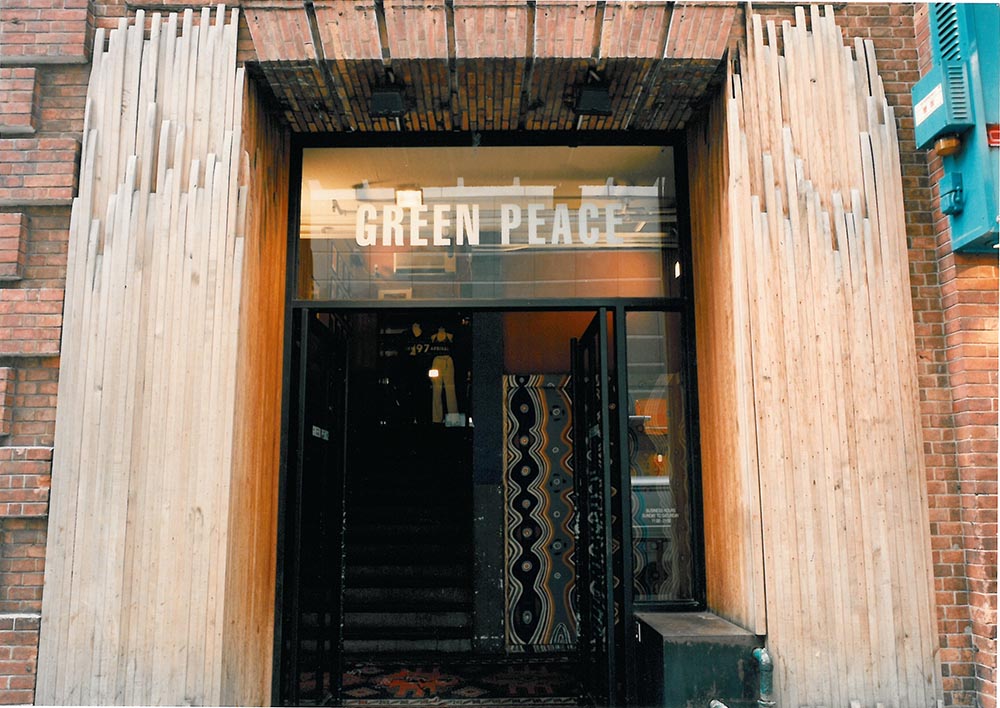

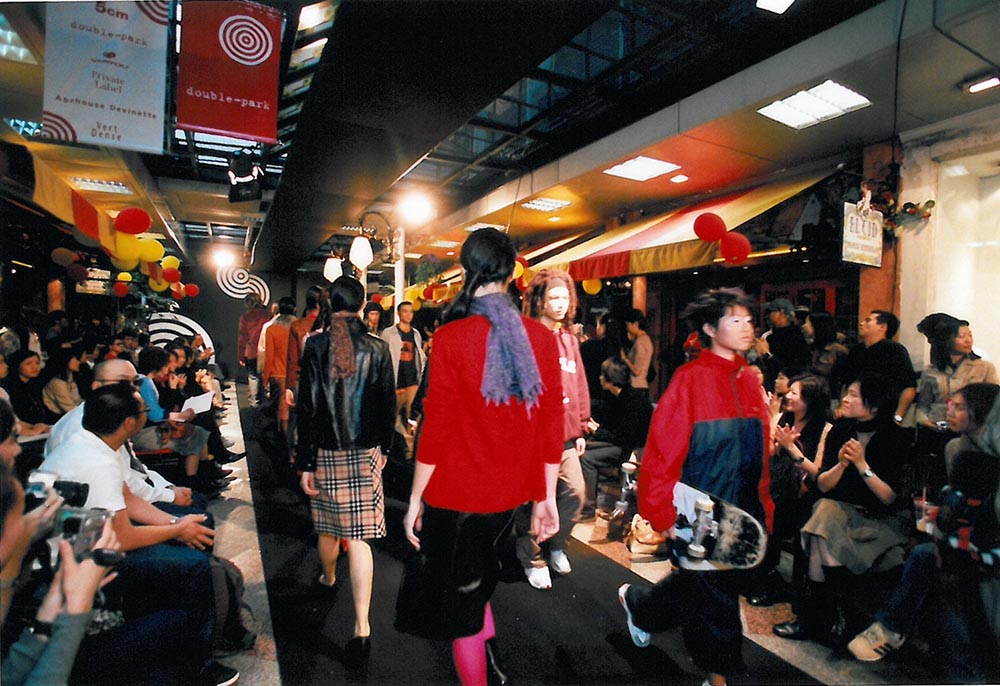
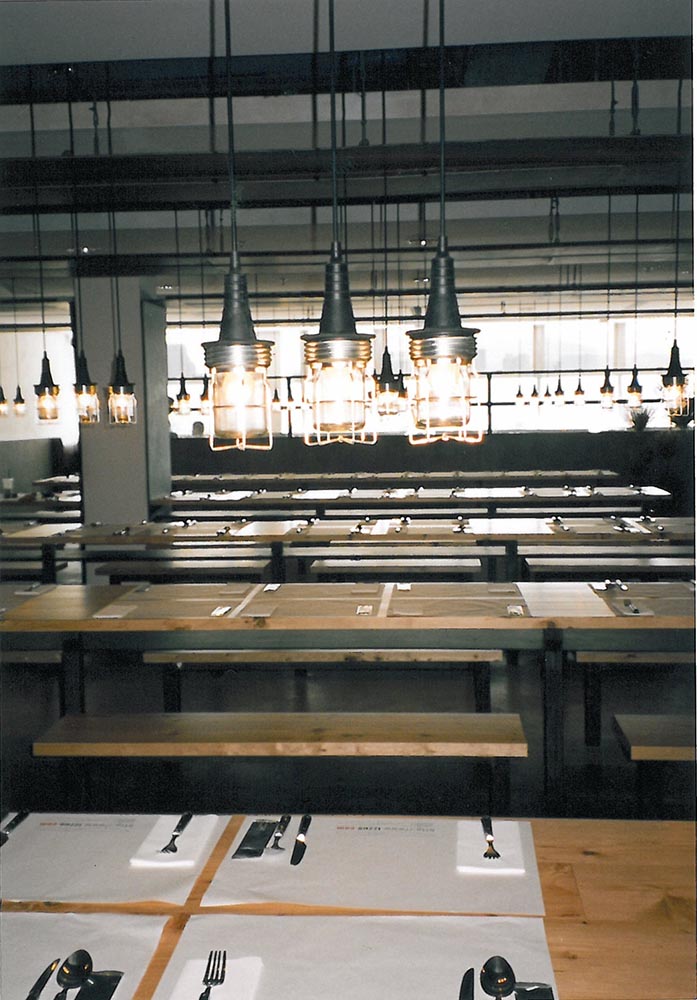
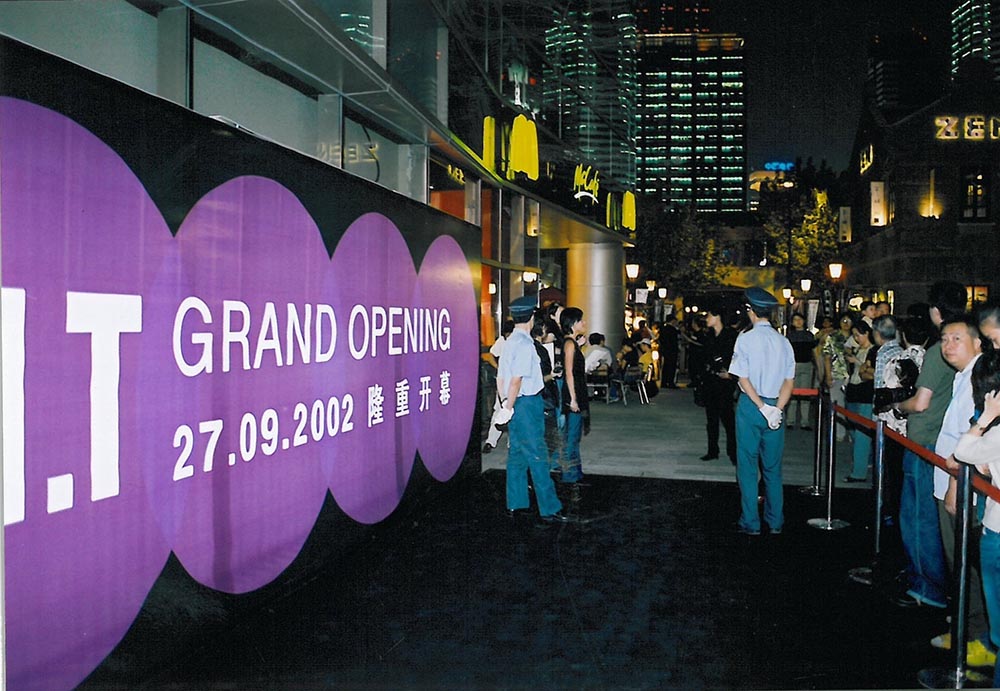
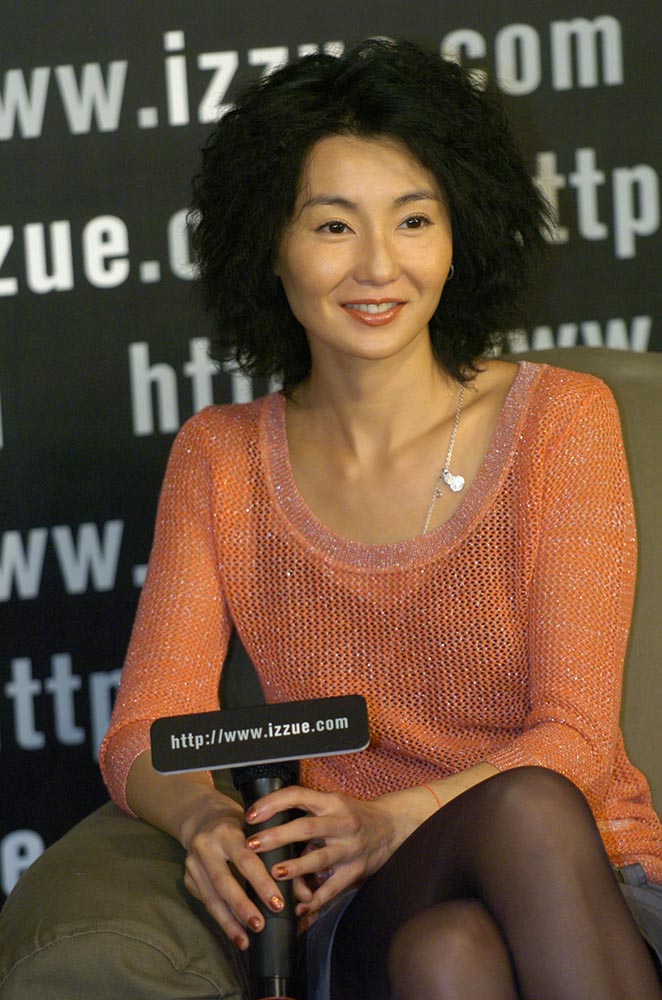
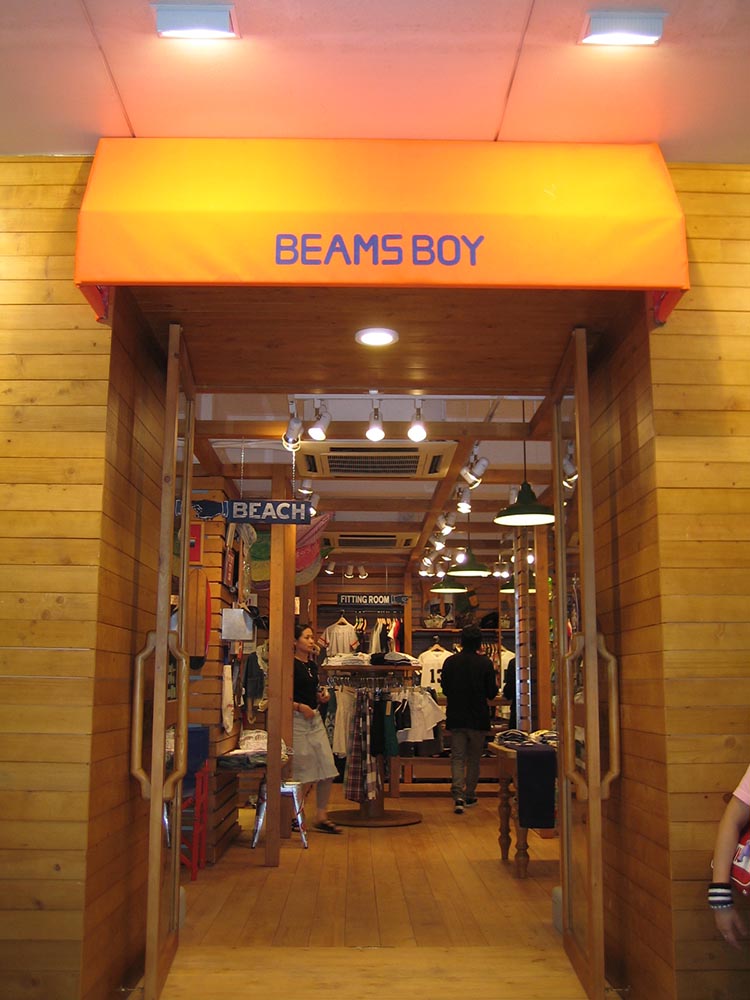
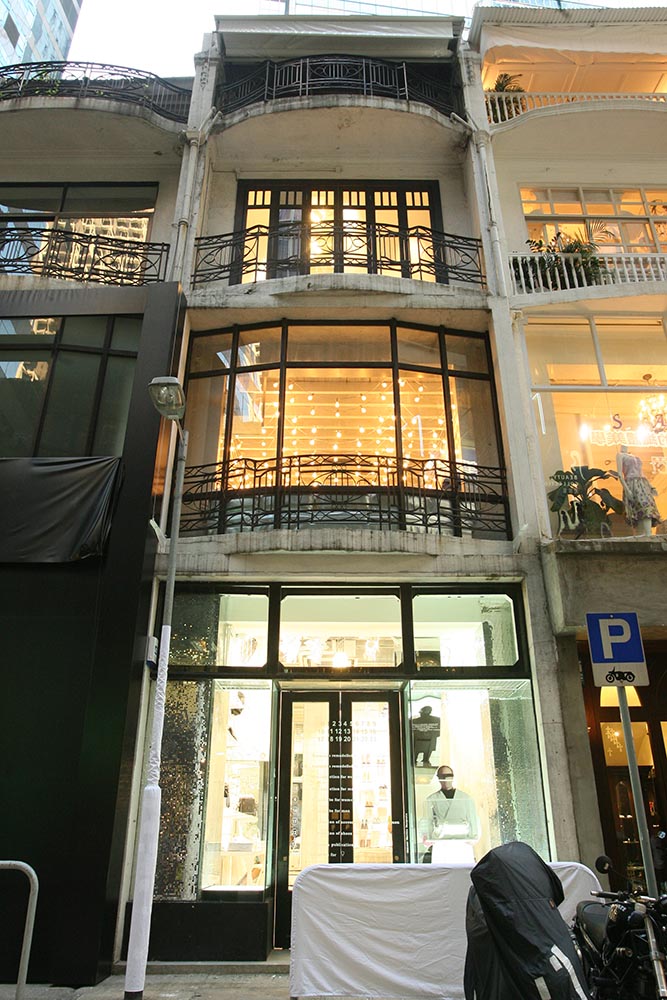
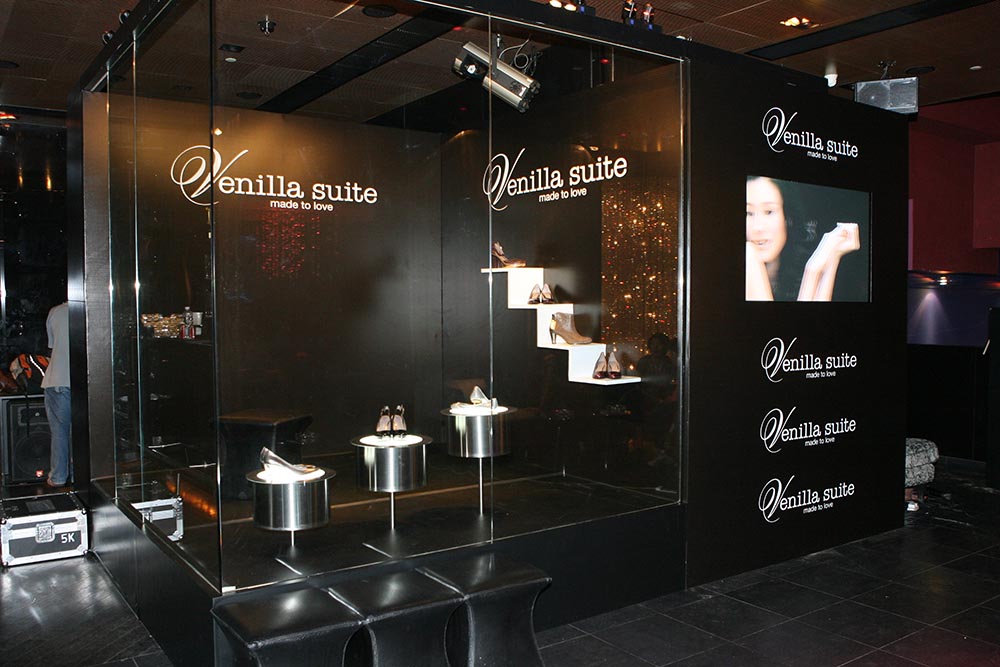


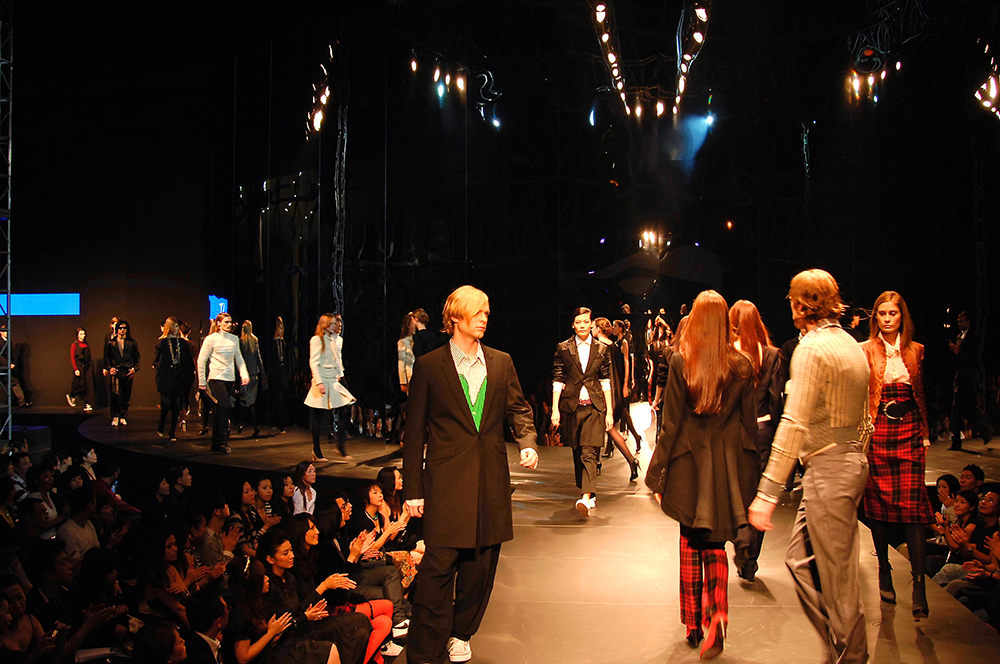
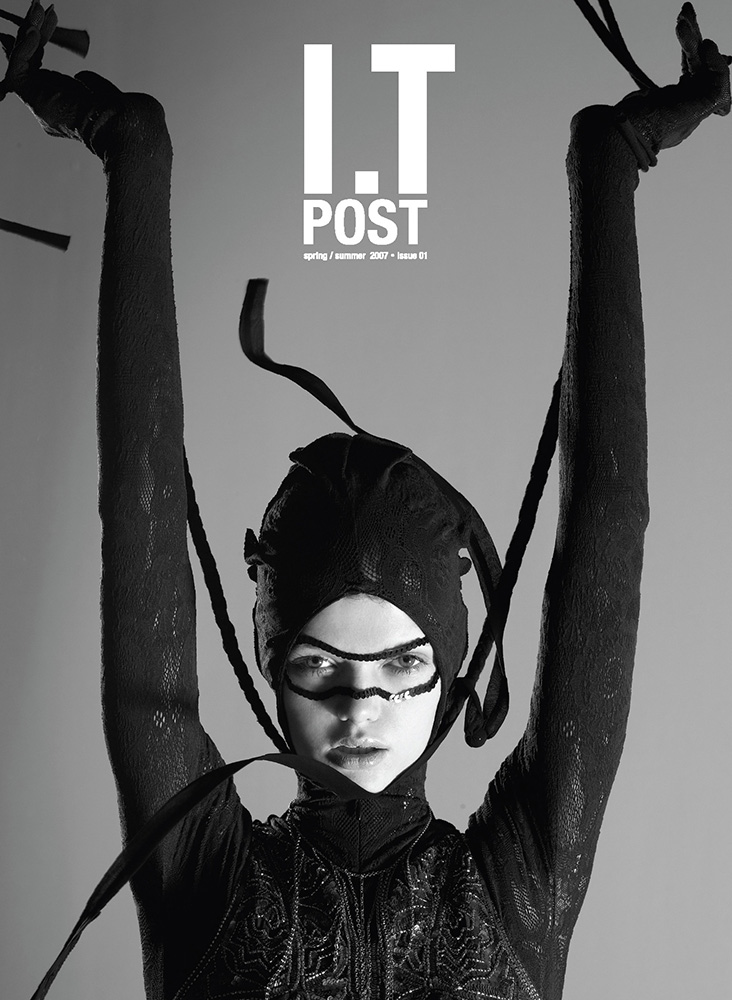
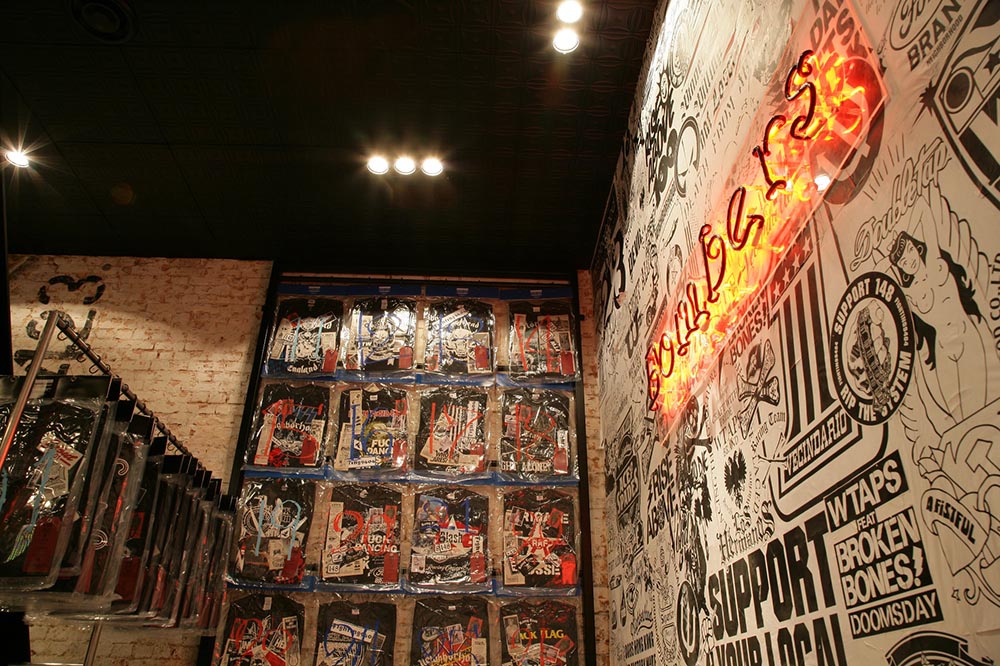

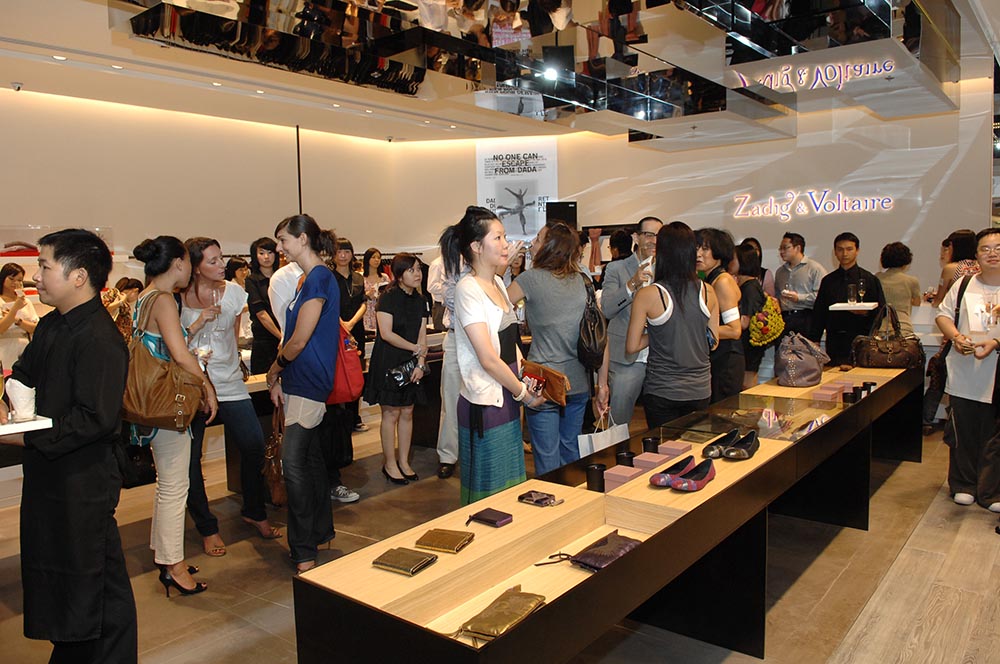
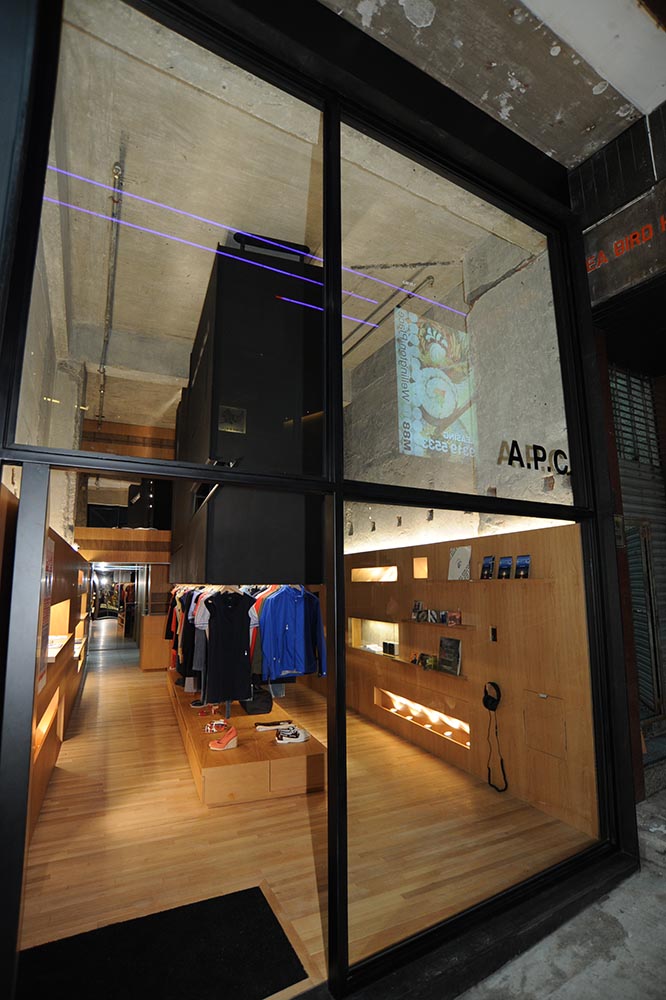
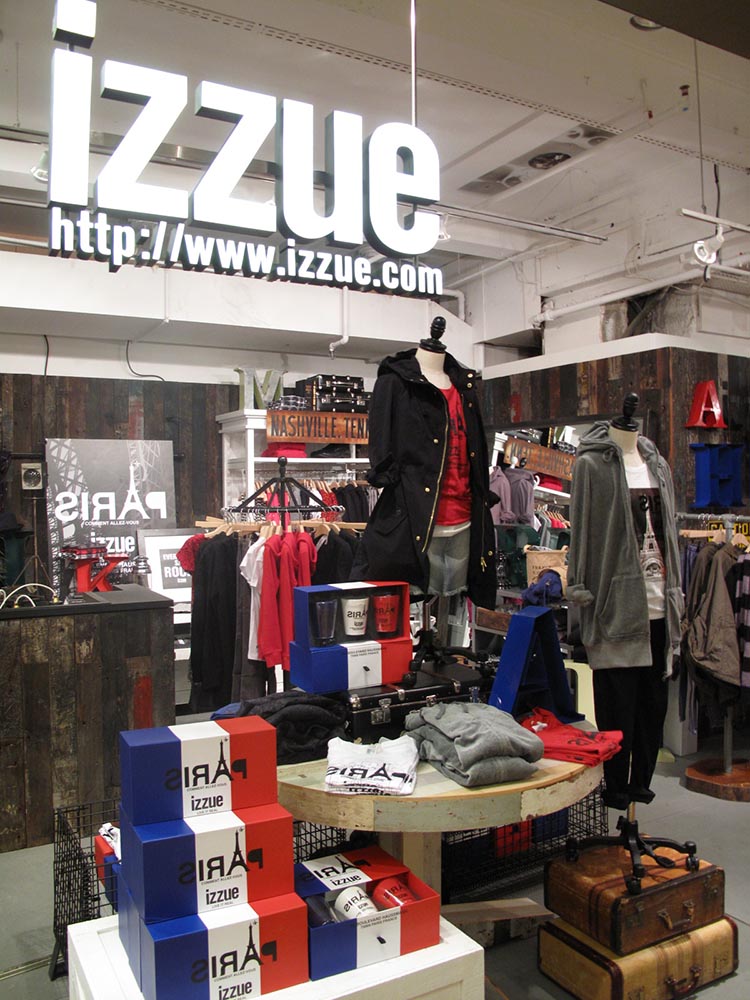
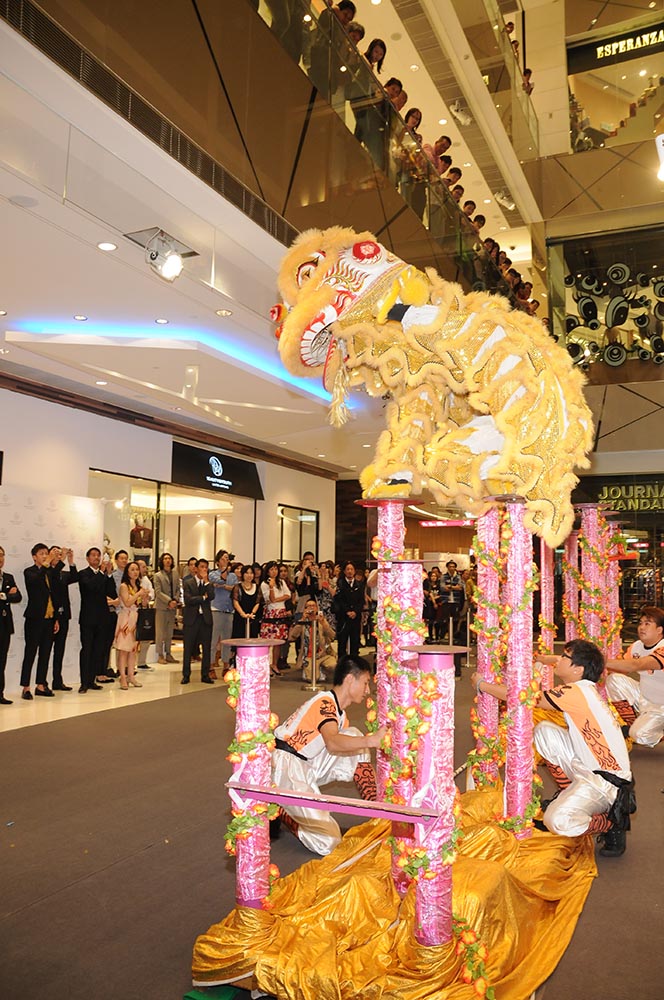
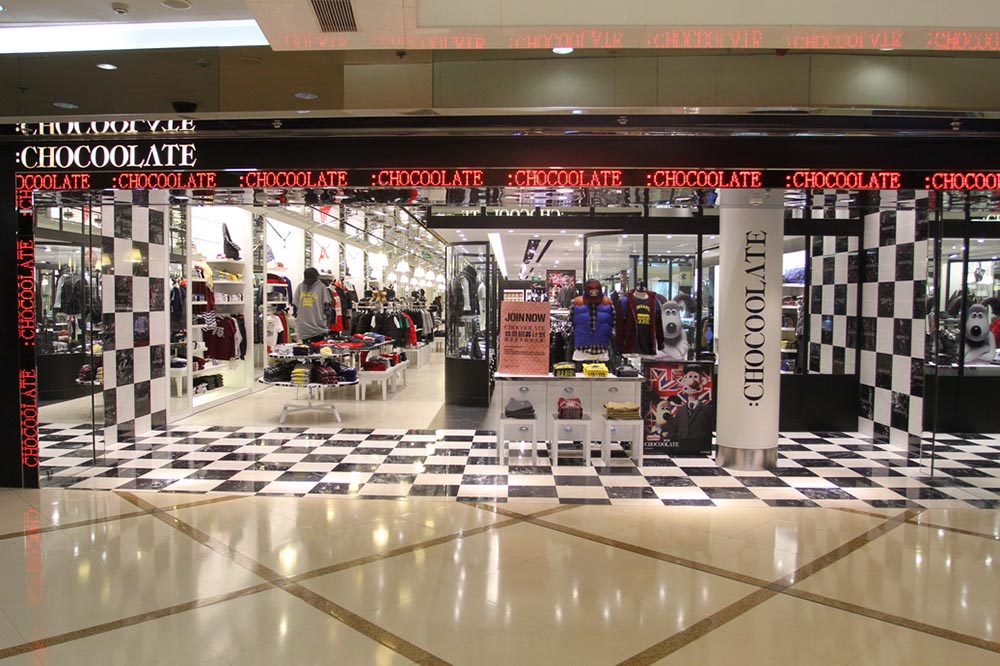
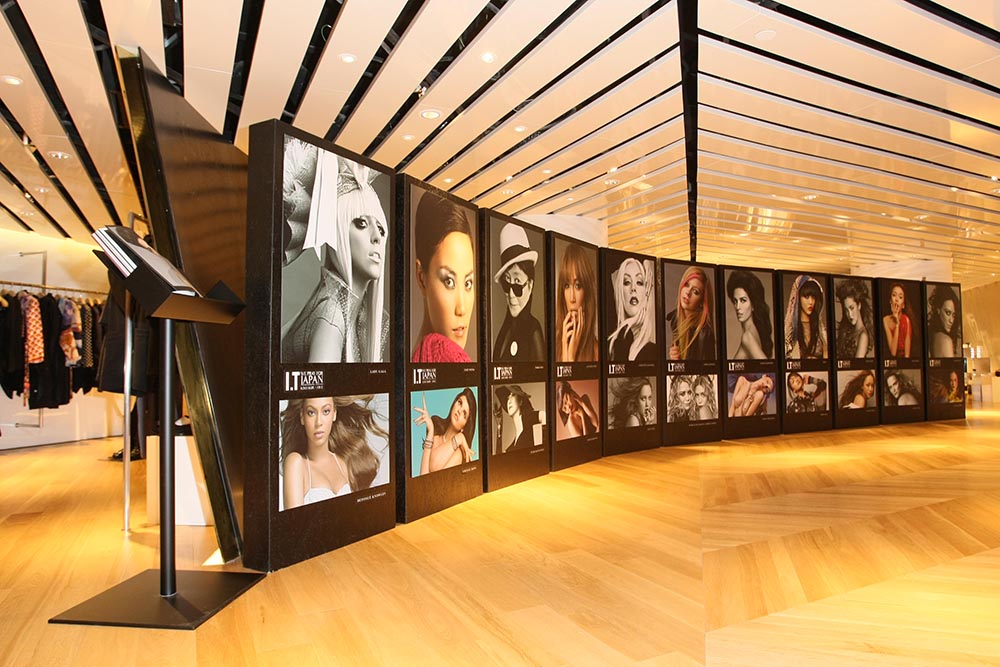
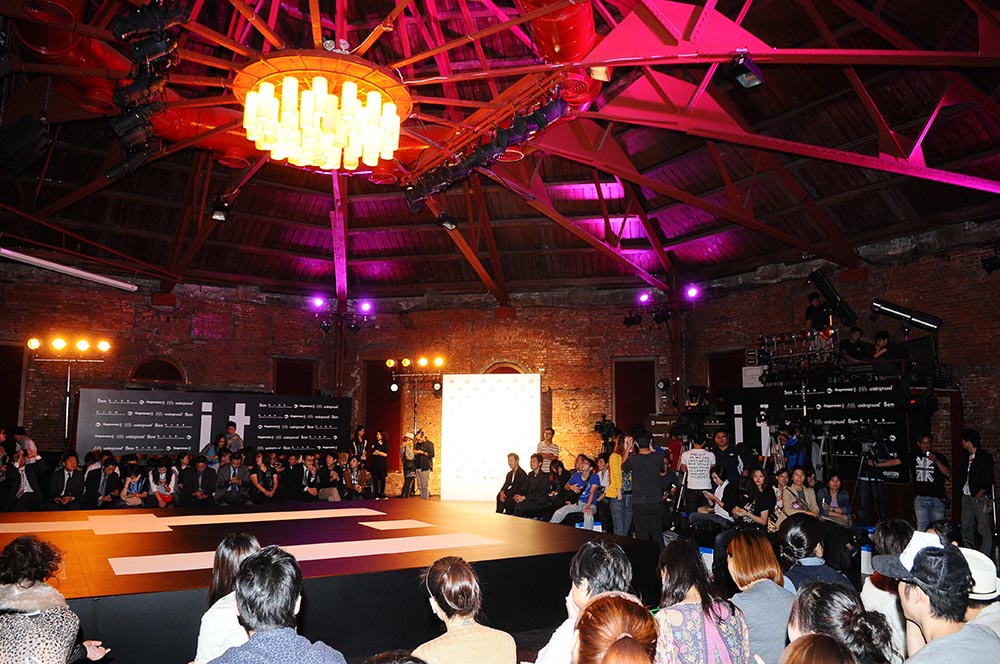
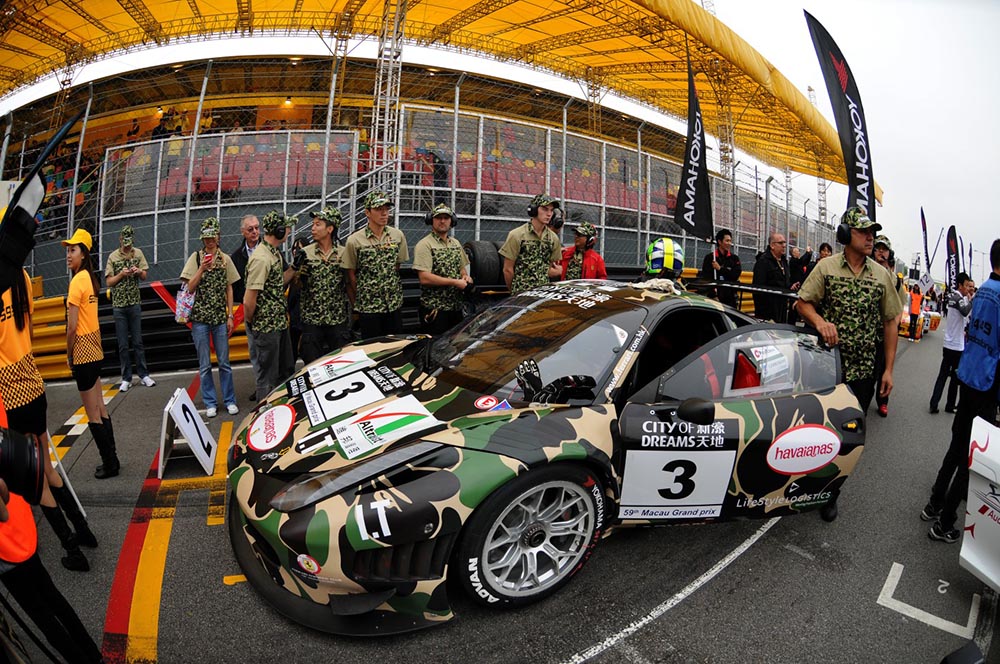

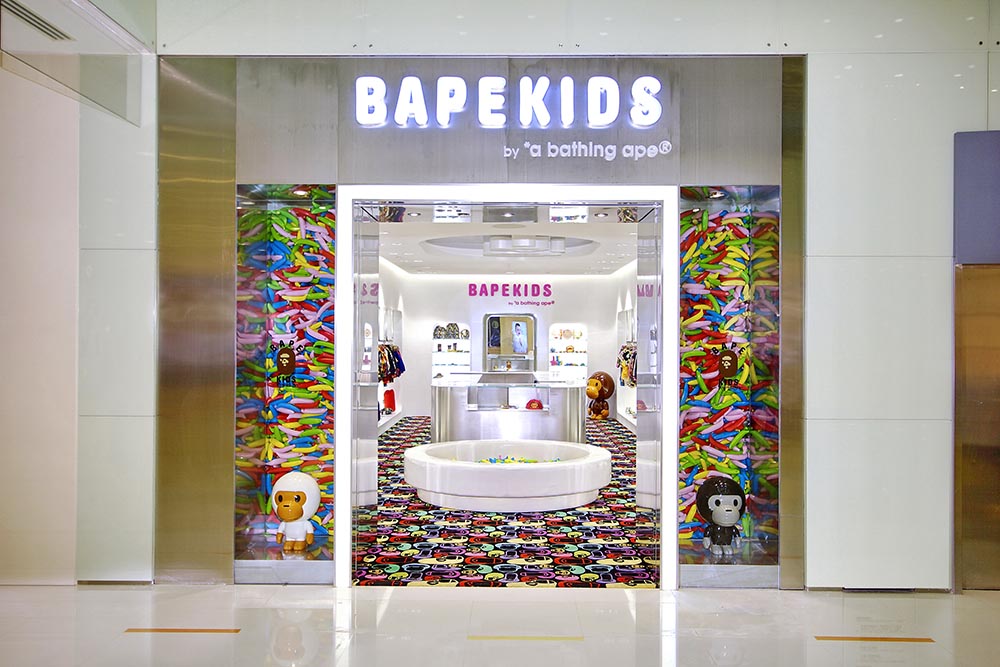
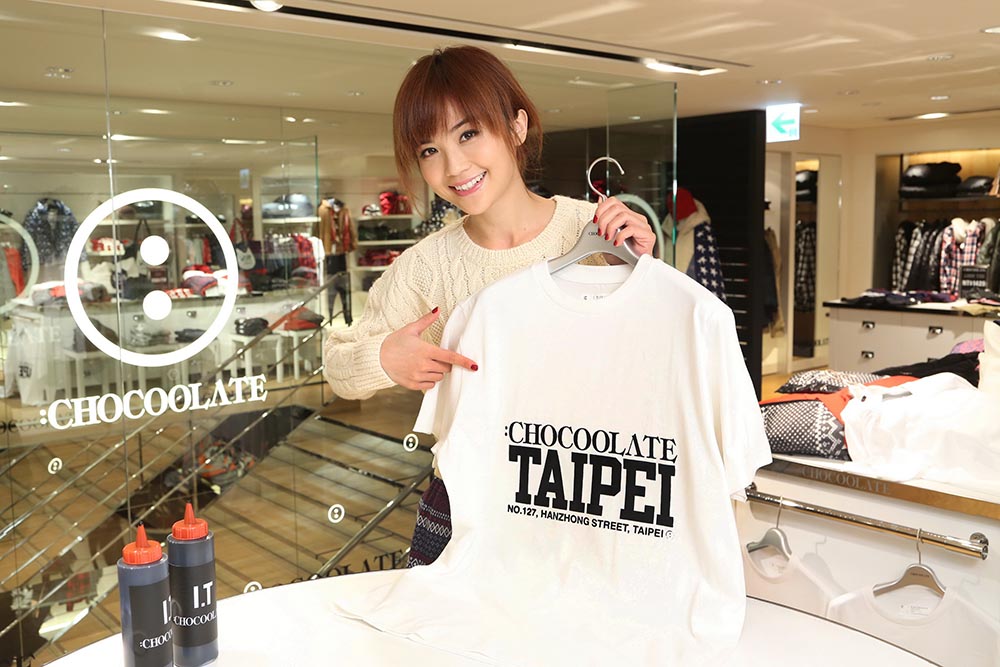
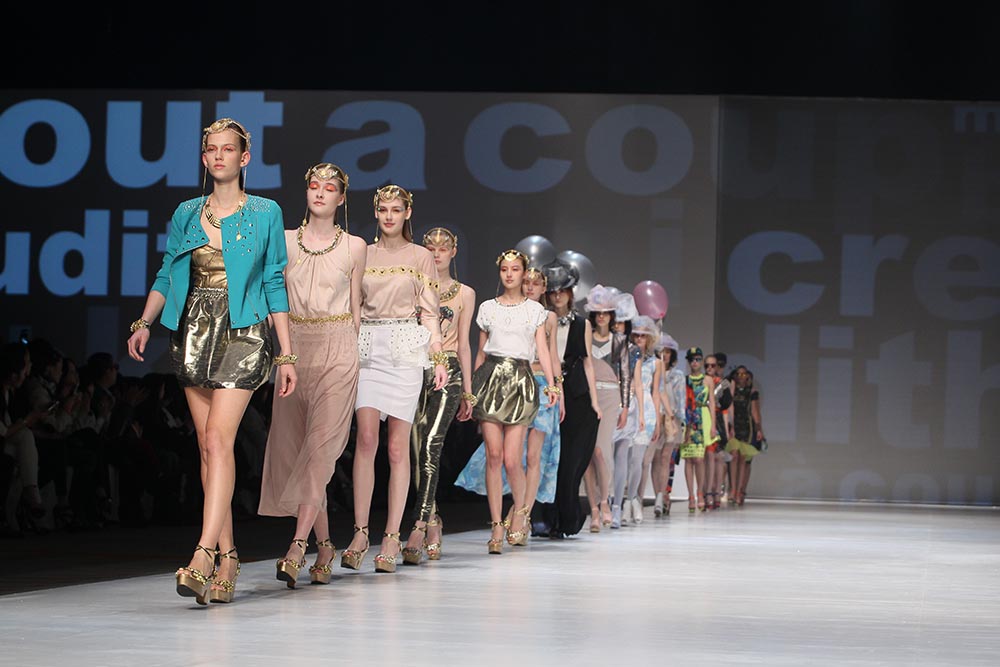

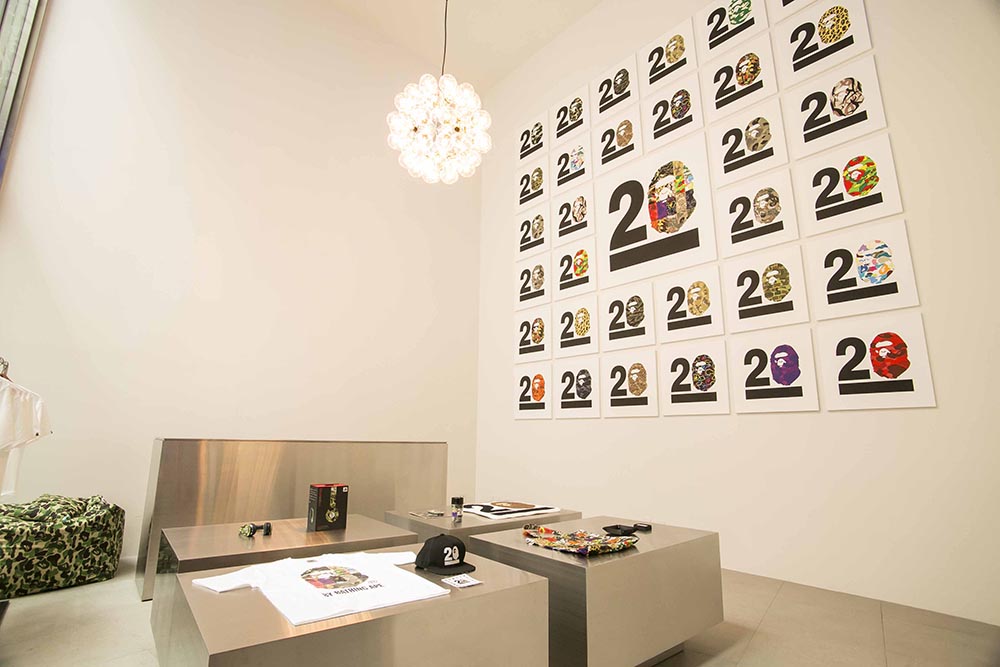
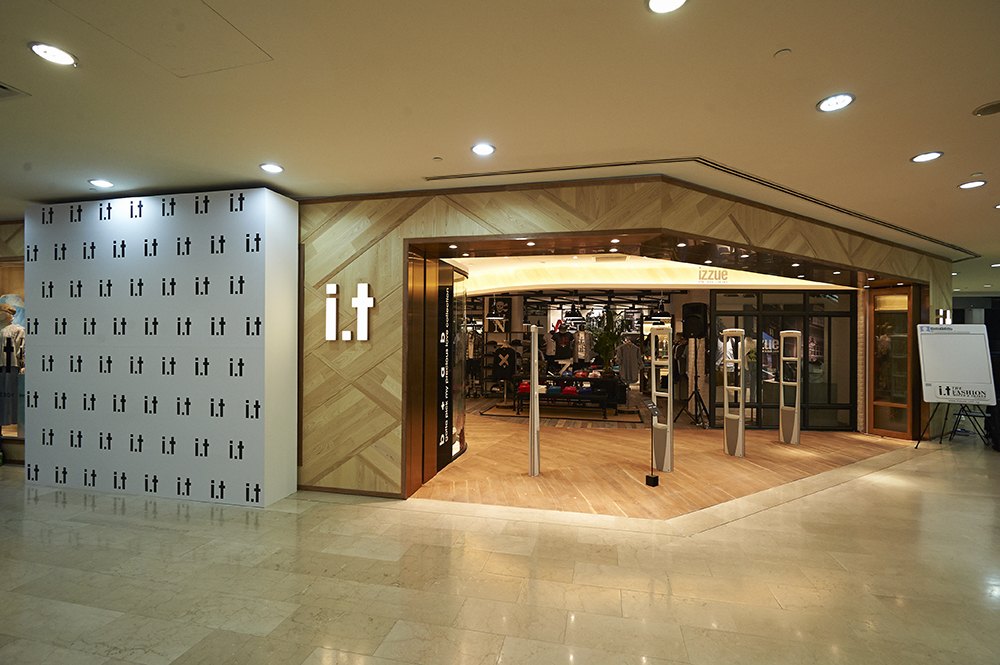
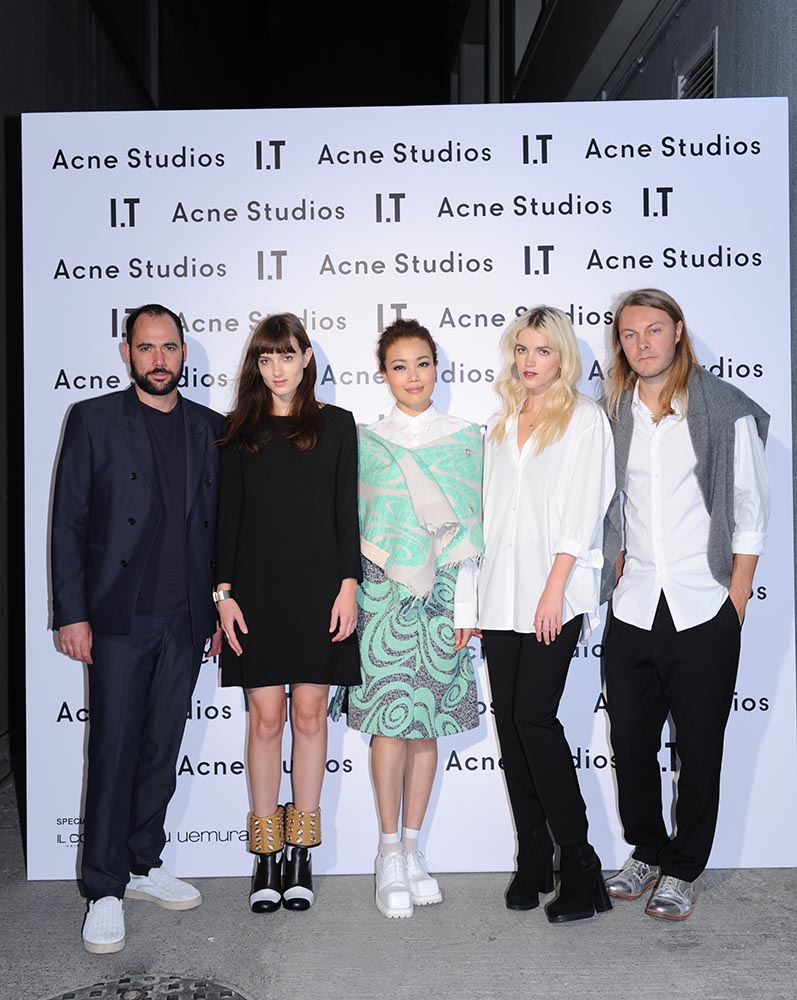
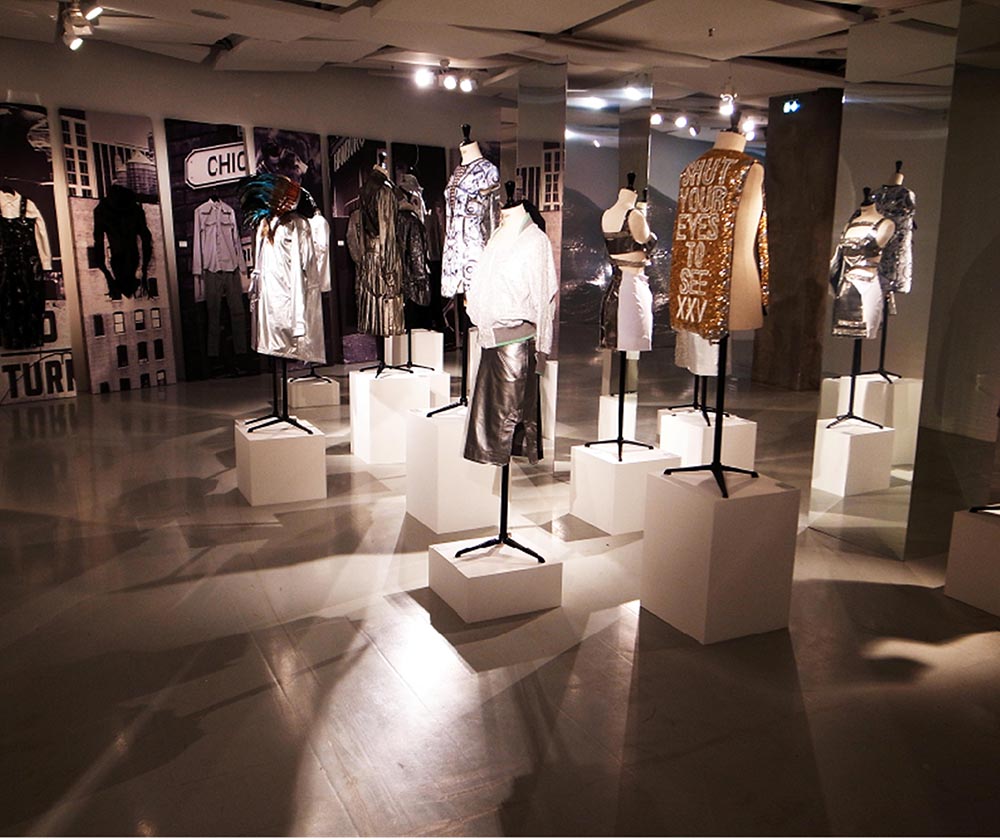
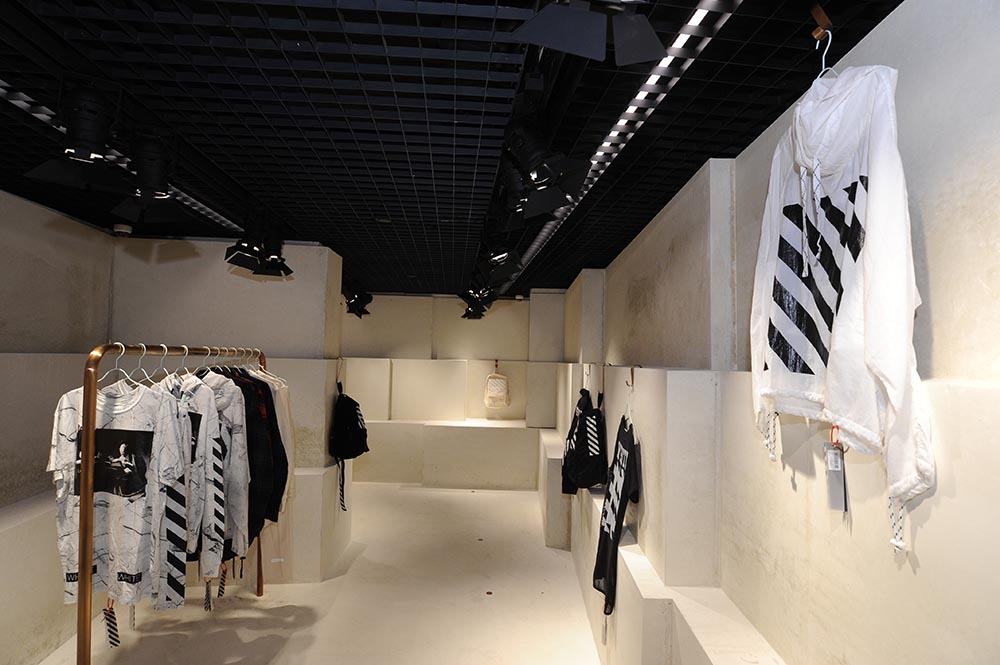
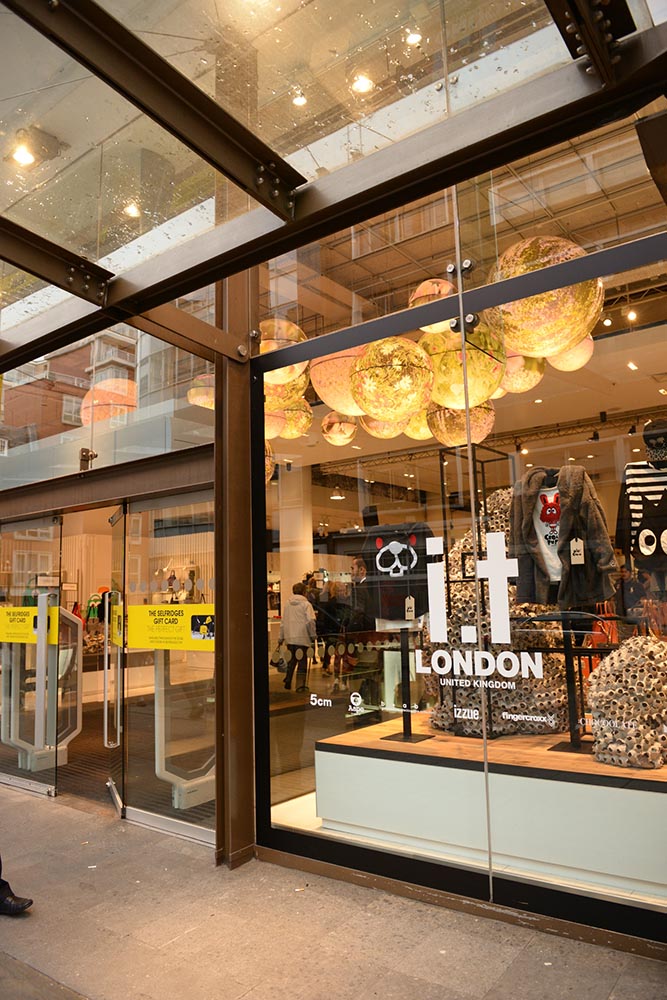
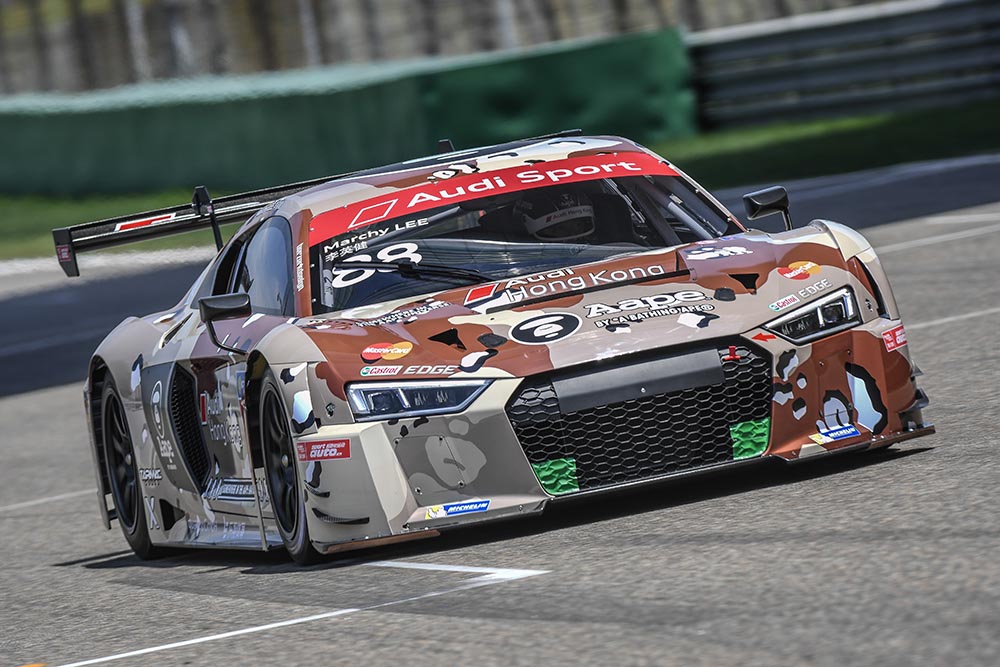
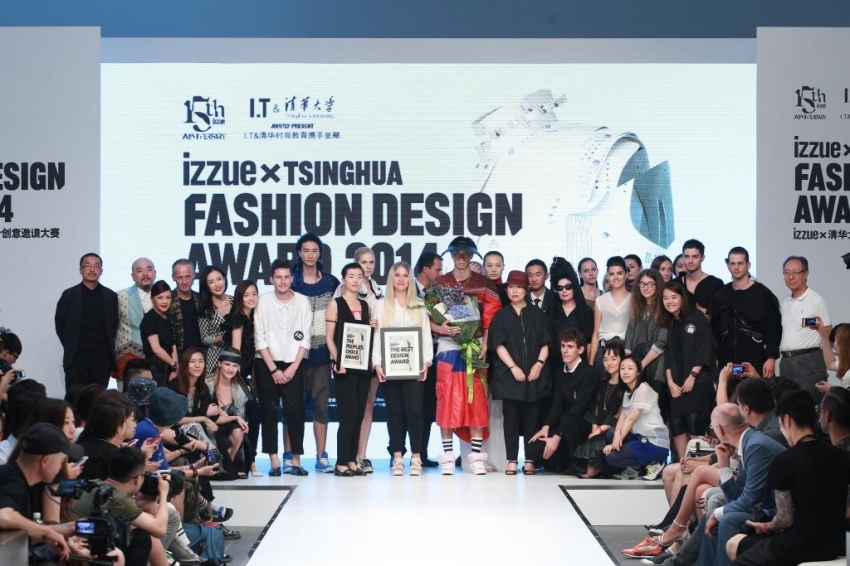
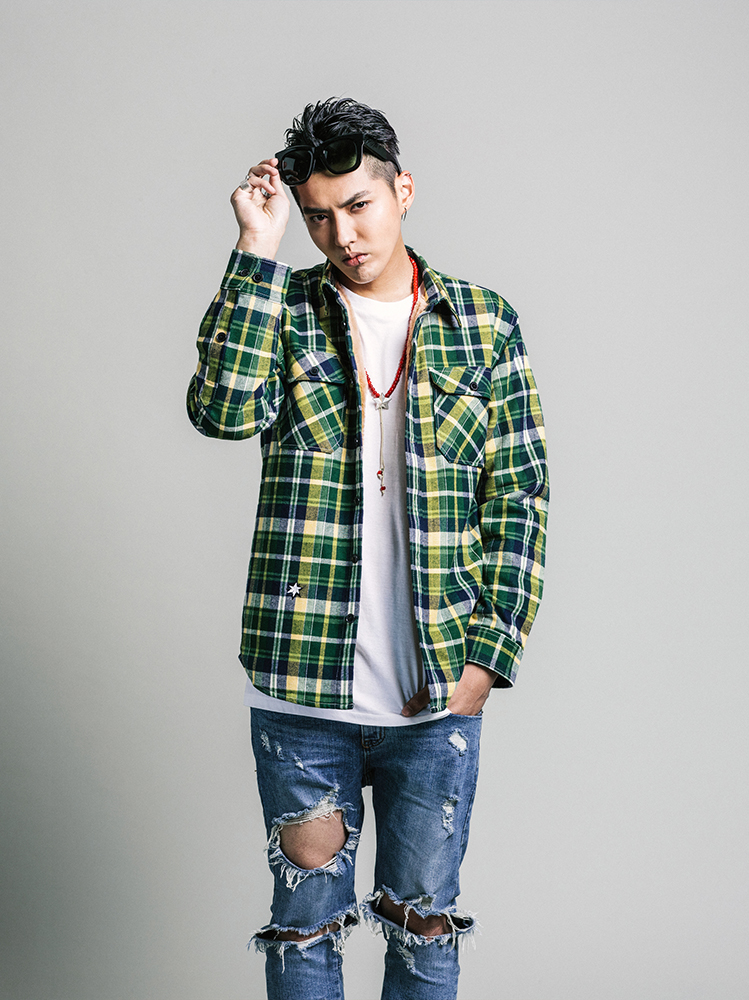
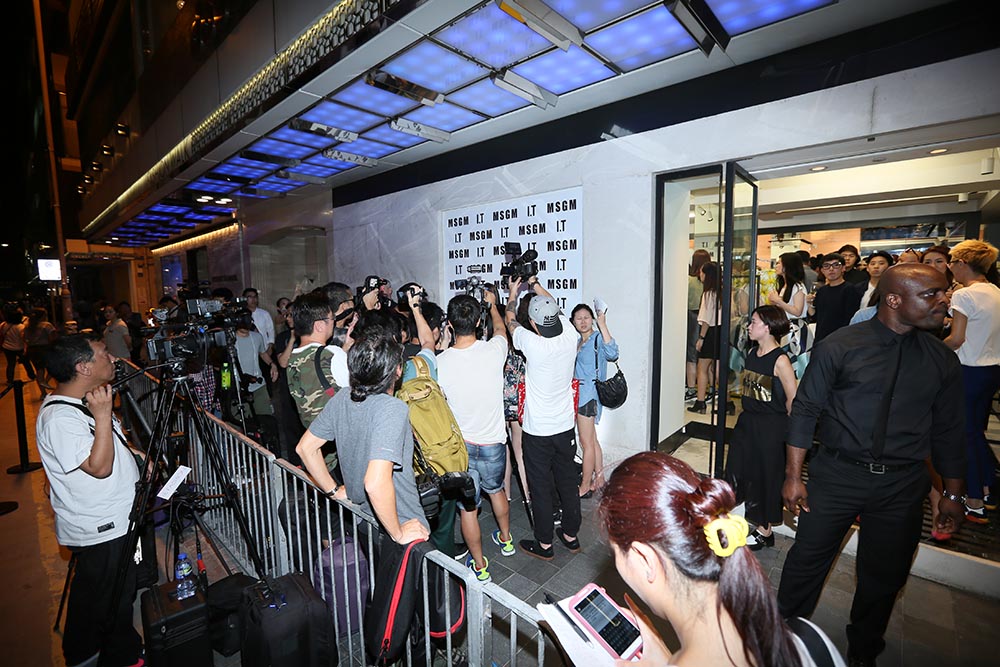

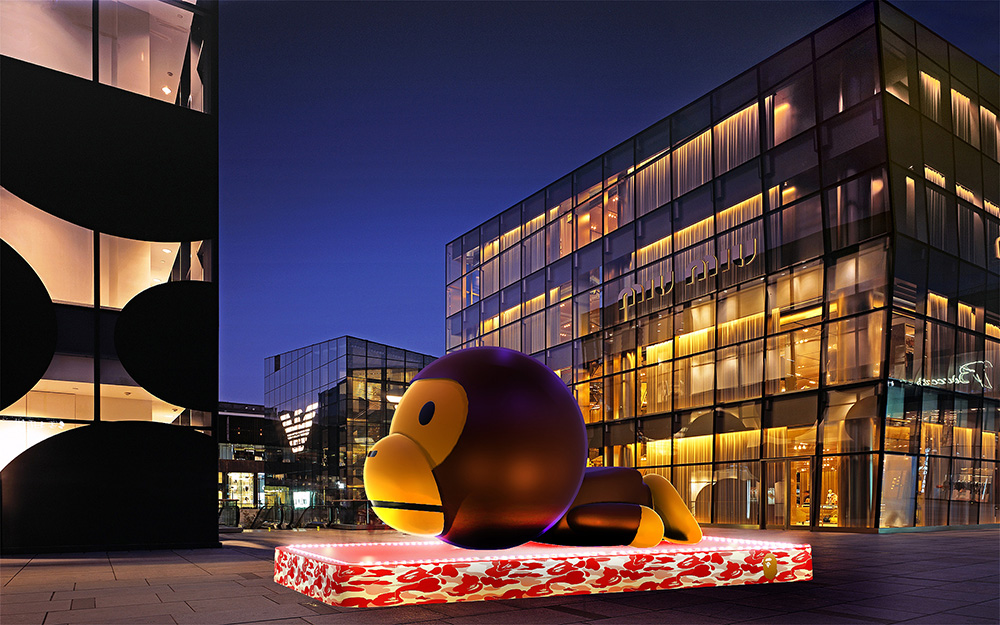
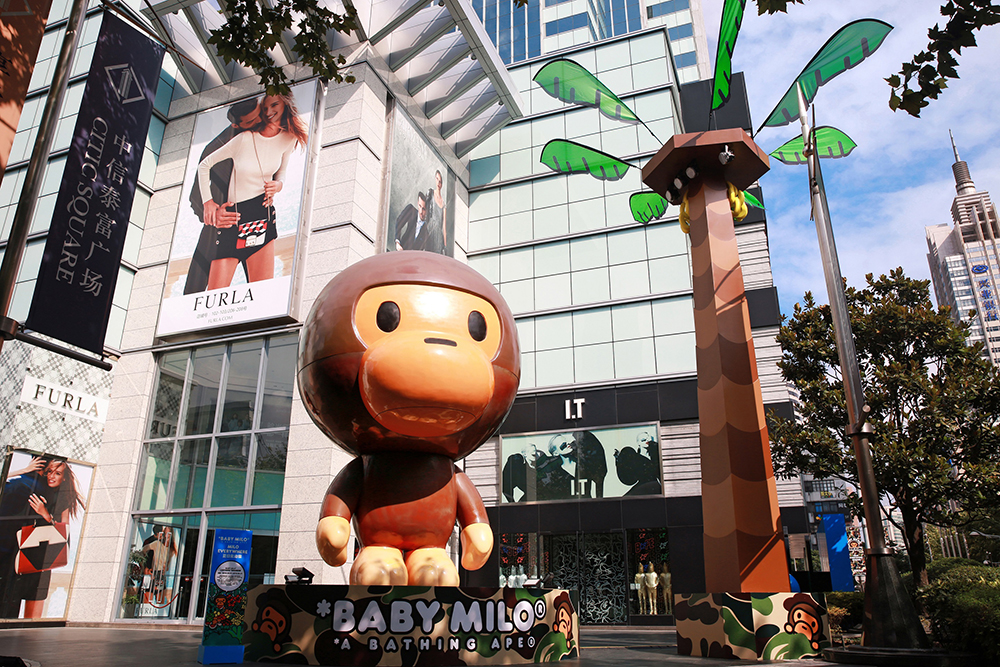
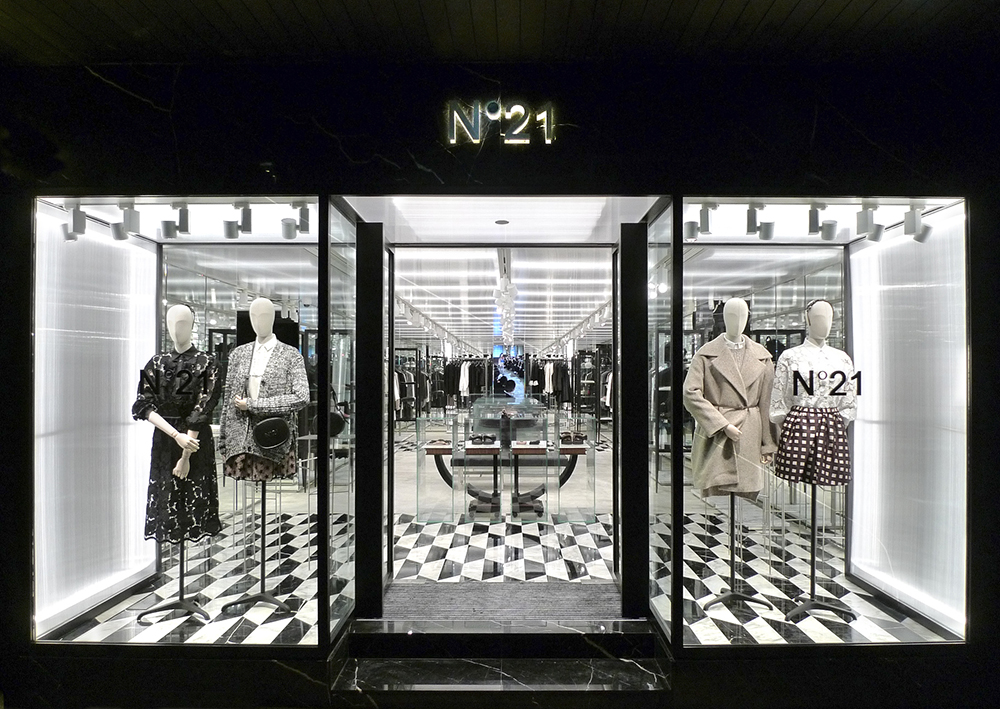
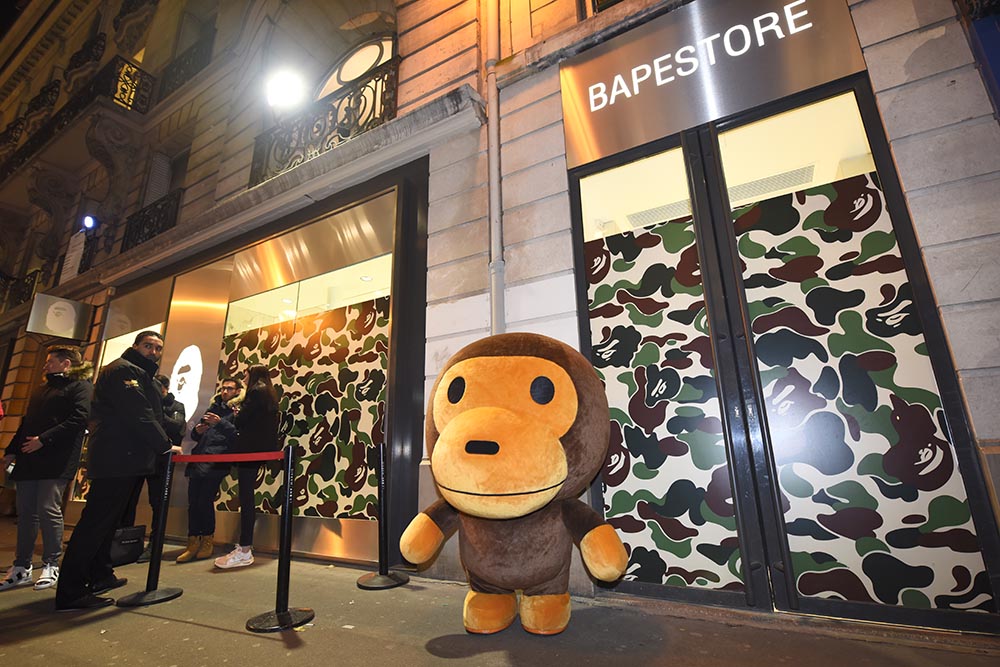
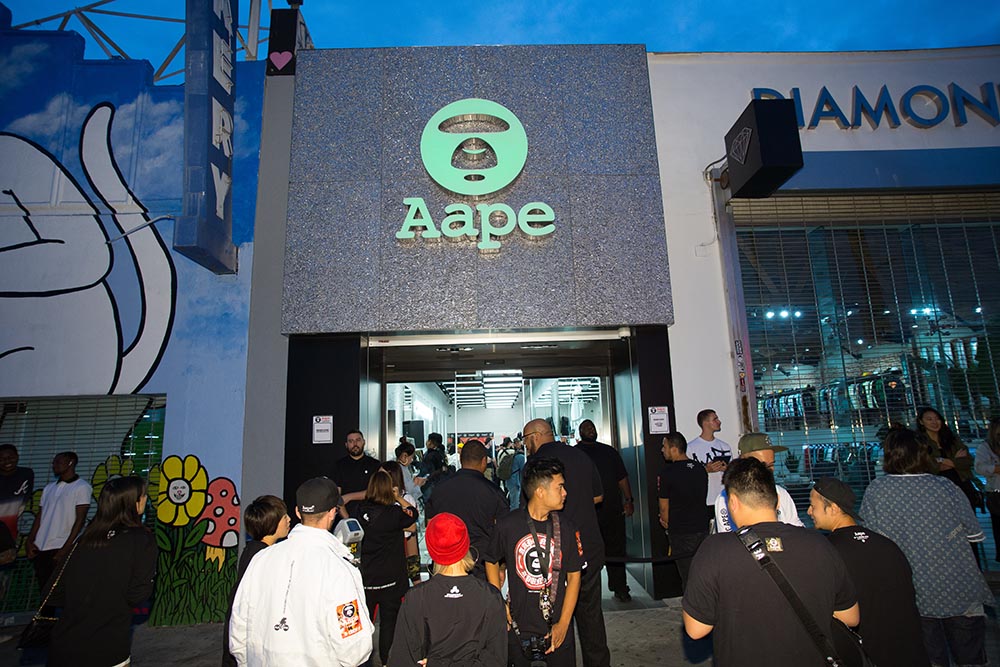

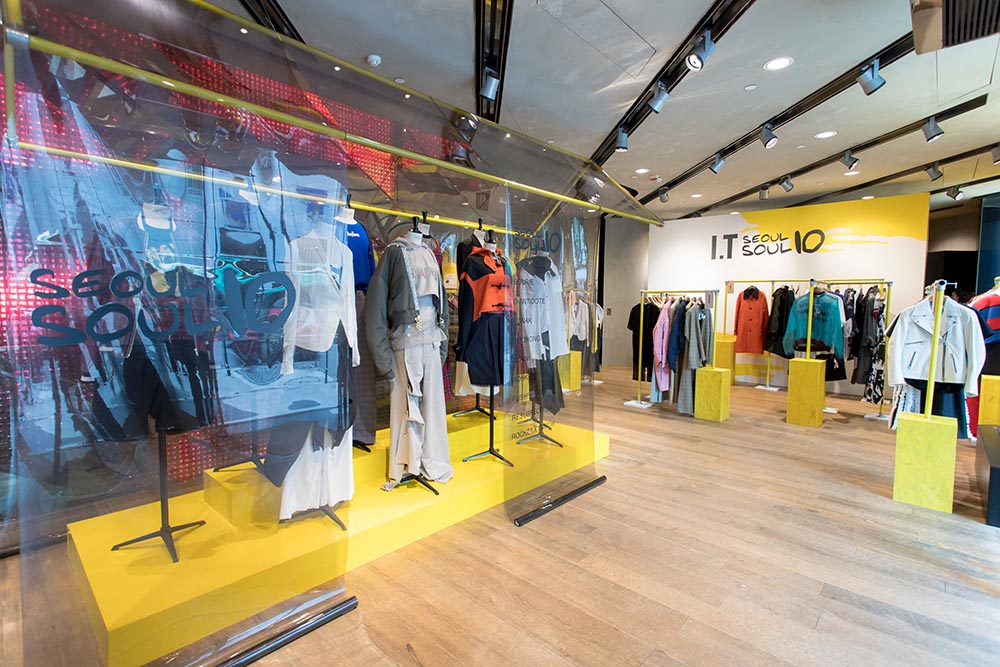
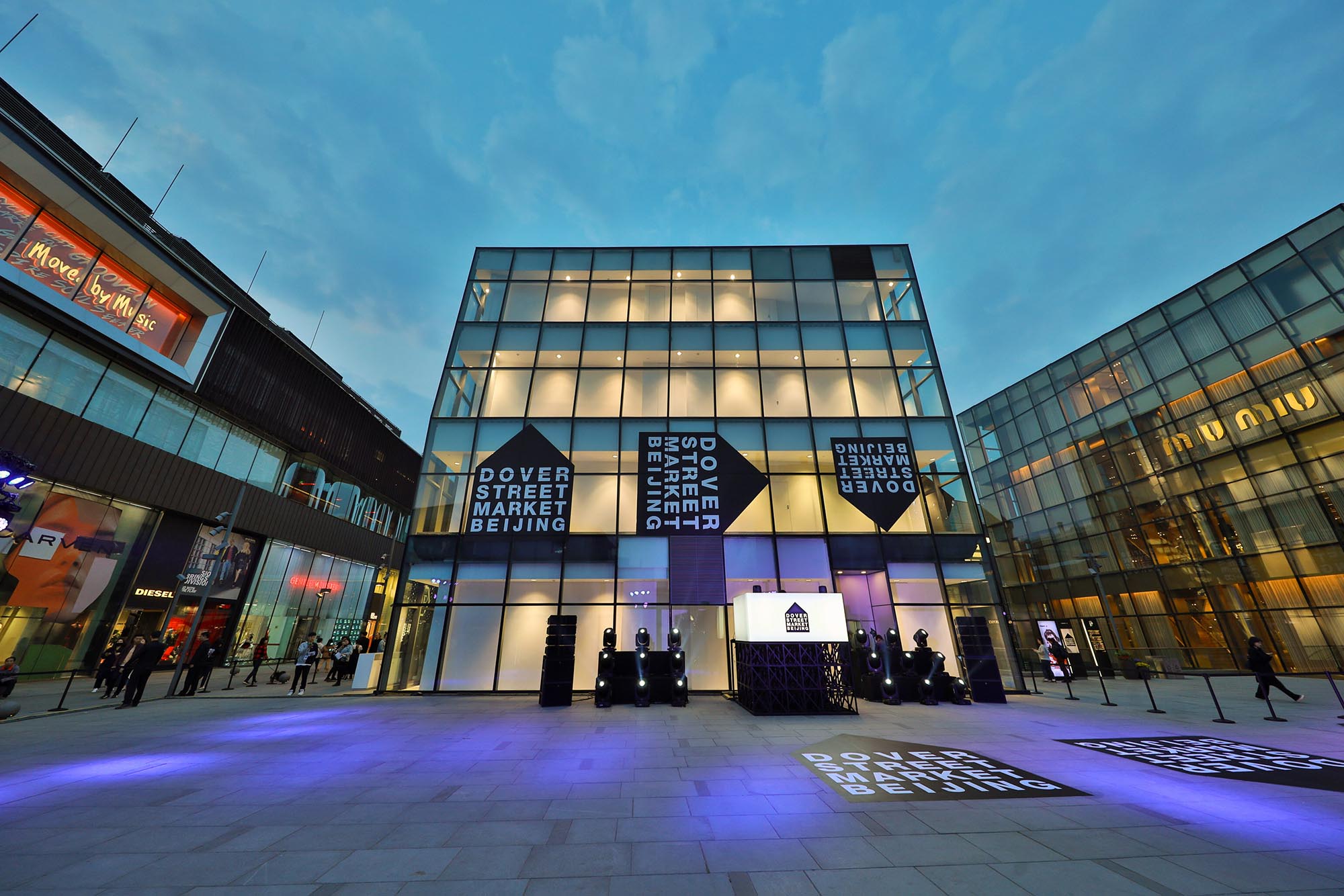

Images: provided to China Daily
Back to top

Track by Track
Hugues Ripert, a passionate Le Mans racing fan, set up his Zhuhai factory for model cars in 1998. Twenty years later and with more than 20 million models sold, Spark enjoys a reputation for excellence and is sought-after by collectors around the world
Track by Track
Hugues Ripert, a passionate Le Mans racing fan, set up his Zhuhai factory for model cars in 1998. Twenty years later and with more than 20 million models sold, Spark enjoys a reputation for excellence and is sought-after by collectors around the world
People > LP Exclusive |
Track by Track
August 15, 2018 / by Philippe Dova
“We work with confidential 3D files and technical information – without even having photos – of a car that doesn’t exist yet or is only in prototype form”
How many cars do you produce each year and how long does it take until a model gets out of the factory?
We have produced nearly 10,000 references and manufactured nearly one million models a year since the company’s inception. We produce vehicles ranging from 1/87 to 1/8 scale; 90% of the vehicles are at 1/43 scale, but the 1/8 is currently very popular. The average time to create a model is five to six months, but in case of an urgent request from a manufacturer for an event, we can make cars in three months.
How do you work directly with car manufacturers?
They send us car details and designs before they’re released to the public and the press. We work with confidential 3D files and technical information – without even having photos – of a car that doesn’t exist yet or is only in prototype form. We must work together with the manufacturer in order to adjust the details up to the last minute.
In terms of manufacturing steps, your plant is comparable to a real car factory. What have been the technological evolutions over the last 20 years?
The biggest progress has been made in the development process. Twenty years ago, we developed a miniature prototype 100% manually; we sculpted the shapes in a block of plaster. Today, however, 98% of the projects are developed in 3D, with 3D files that either come directly from manufacturers or that we create ourselves in France with a 3D scanner and a team that recomposes 3D files. It saves time and allows for precision. It’s not necessarily cheaper, but it is more efficient.
Read More
Are you interested in electric cars? Does Spark manufacture electric car models?
A car is a car, but I have big doubts because I have an ecological problem with the electric car. An electric car, once recycled, becomes the most polluting car in the world – and the production of electricity to charge the batteries also causes huge amounts of pollution.
How many people work in the Spark team?
We have 1,200 people spread across three production sites in China, including 700 in Zhuhai. We have distribution offices in Japan, Germany and the South of France.
Who are your main customers?
Car manufacturers, racing teams, or sponsors who need miniatures for presentations, promotional items or gifts… We don’t really have a dominant customer, though. I never wanted to have a customer that exceeds more than 20% of our turnover.
What’s the next step for Spark?
We’re trying to develop a range for children and have created a mascot named Sparky! Because today a car miniature alone doesn’t interest children anymore, Sparky’s mission is to be our brand ambassador by transmitting our automobile passions to the youngest generation. Thanks to new communication technologies such as apps, the idea is to propose a new product that’s no longer just a miniature, but a didactic item with a short story that features interesting information about automobiles for young people.
![]()
Images: Philippe Dova
Back to top

Renaissance Man
Mr Kira is a man of many talents. Formerly a creative director at specialist website OnlyLady, owned by American television powerhouse CBS, he’s also been an editor of a Japanese music magazine, a radio DJ and an acclaimed author of fiction, on top of being a prolific writer for numerous publications. But he’s best known for being one of the most-followed fashion bloggers in China, with 2.4 million fans on Sina Weibo and half a million subscribers on WeChat, where he posts the latest looks, trend-based news and his round-up of “Who Wears What”
Renaissance Man
Mr Kira is a man of many talents. Formerly a creative director at specialist website OnlyLady, owned by American television powerhouse CBS, he’s also been an editor of a Japanese music magazine, a radio DJ and an acclaimed author of fiction, on top of being a prolific writer for numerous publications. But he’s best known for being one of the most-followed fashion bloggers in China, with 2.4 million fans on Sina Weibo and half a million subscribers on WeChat, where he posts the latest looks, trend-based news and his round-up of “Who Wears What”
People > LP Exclusive |
Renaissance Man
June 20, 2018 / by China Daily Lifestyle Premium
“I have a collection of more than 200 jeans. When I was younger, I tended to collect and maintain them, but now I just can’t wait to wear new jeans”
When did you start blogging and how did you end up writing about fashion?
I started writing a blog on [the now-defunct] MSN Spaces around 2006. My blog was among the first batch that had more than a million views. I officially became a fashion blogger as I transitioned from MSN to Weibo, in 2010. At that time, Chinese netizens were just exploring Weibo out of curiosity – “the Twitter of China” and the 140-word limit were a new thing.
What was the first time you worked with a fashion brand?
In the MSN era. Some brands found me and gave me their products to try. Then, if I found them to be good, I’d recommend them. The commercial sense was very much lacking at that time, though; the brands didn’t really know how to do these types of collaborations. But I did realise that I was given some sort of attention.
The first brand I collaborated with was a cosmetics line, I think under L’Oréal. At that time I was also writing a beauty column for a magazine, so I took the article from the column over to my blog and added a new facial cream. But it was cheaper than the rest of the products, so I remember there were a few followers who suspected me – nothing serious, people were just curious.
As far as the first larger-scale collaboration, that was in my Weibo era. I was invited by Gucci to their show in Italy, and I wrote some pieces and tweets on the way. We didn’t know anything about increasing fans or boosting sales at that time; fashion blogging in the West was already quite mature then, but not in China. So I was selected as a representative of fashion bloggers coming from China.
In 2009, you published a fantasy novel and in the next two years, you published two novels that are collections of love letters. Where did you get the inspiration?
I like to imagine what life stories the people around me are having. I was inspired by my experience in Beijing as a “bei piao” [Beijing drifter] – many prototypes came from my neighbours in the same building and the little restaurants downstairs.
For the first book, I was an editor for an animation magazine then, so there are many things people who love ACG [anime, comics and games] can relate to. It’s a book for young people, perhaps aged from middle school to university.
In the two love letter collections, I wanted to talk about the preservation [of love]. Vegetables can be preserved in the frozen section, but preserving love is difficult for human beings. I used daily-life objects to create love metaphors. It’s not addressed to anyone specific; I just hope to be a person who can tell love stories that others can relate to.
Read More
Who’s the most interesting celebrity you’ve ever interviewed?
Gwyneth Paltrow. I was invited by Boss to interview her in New York when she was the face of the brand’s perfume. It was held in her hotel room; she was in a very luxurious velvet robe, lying on a sofa looking extremely rich and laid-back. I asked her, “Why were you chosen as the spokesperson?” She said in a very lazy tone: “I don’t know.” The Boss PR person was right next to us, so it was quite embarrassing. So then I tried to talk about something else, like “Your husband [Chris Martin of Coldplay] loves you and we all envy your marriage.” She instantly became excited and began to talk a lot, like about that her husband had just released a new album and so on. The funny thing is, the next day I went back to China and I read about her divorce in a newspaper.
Some fashion bloggers only post and repost information from brands. But you’re also a critic who doesn’t hesitate to give your opinions – so in your mind, who has the best style in China?
Liu Wen. She can make every fashion item look effortlessly chic on her. I don’t normally think that Erdos is a fashionable brand, but those sweaters look very chic on her. Also Xiao Song Jia, Liu Tao – she matches the watches with her outfits.
What’s your personal style like?
I’m pretty slouchy in private. With friends, I wear hoodies. At fashion shows, I wear suits and the latest fashion items. I have a collection of more than 200 jeans. When I was younger, I tended to collect and maintain them, but now I just can’t wait to wear new jeans.
How many fans does your WeChat public account have?
About half a million – and 60% to 70% of them are girls.
How do you work to publish an article on WeChat almost every day and manage your Weibo at the same time? Is everything written by you?
I haven’t had any editorial assistants until the second half of last year. I opened my WeChat account a long time ago. My entire team has ten people; four of them are editors. So every week I have a meeting with the editorial team to discuss the key events that are happening, such as the Grammys; if there’s no key event, we talk about the trends. After confirming the topics, the editors go on to research. Two days before publishing, I read their work, refine and correct the logical mistakes; that’s the first draft. Then we work on the layout, so we revise it two times. If it’s an advertorial, I talk with the clients and revise three times.
Are you ever concerned by the numbers of fans and the page views?
At first I was. There were often those blockbuster articles of more than 100,000 views [WeChat caps the view count at 100,000]. But now I’m not. I found those blockbusters are usually on love and relationships, or gossip – not necessarily on fashion. I’m not one of those blockbuster bloggers, but I’m lucky my fan numbers have increased very steadily each month.
What’s your biggest challenge right now?
I’d like a switch right now. I don’t want to rely only on the two platforms of Weibo and WeChat. I’d like to connect print with new media. I’m still writing for print magazines and exploring new platforms. And I’m also a radio DJ. “What else can I do?” I ask myself. This year, I’ve been a producer of an online show, which is about helping young people break into the fashion industry and start-up businesses.
What’s one thing that people don’t know about Mr Kira?
I’m a huge fan of video games and I pay a lot for this hobby. I can play seven to eight games at the same time. Fashion is tiring; you have to catch the trends and news 24/7. I was in ACG before – probably in the future I’d like to build new connections with that world again.
If you could write one person’s biography, who would you choose?
Jin Yong [the influential Chinese wuxia (martial arts) novelist and the co-founder of Hong Kong’s Ming Pao newspaper in 1959]. He’s a very important influence on me and my writing. Not necessarily the wuxia part, but the romance and his discourse about humanity. He’s someone I truly admire. I have had many opportunities to interview him, but I don’t dare to. He’s a dream to me – and I don’t want to disturb that.
![]()
Images: Provided to China Daily by Mr Kira
Back to top

Bags of Influence
Tao Liang, better known as Mr Bags, is a 25-year-old handbag-focused blogger based in Beijing. Last year, he set a record by selling about RMB 1.2 million worth of a limited pink edition bag from Givenchy, exclusively on his WeChat channel – in just 12 minutes. Now with more than 3.2 million followers on Weibo, he continues to be chosen by global luxury houses as a window to approach Chinese millennials, who have a voice and a purchasing power too great to be ignored
Bags of Influence
Tao Liang, better known as Mr Bags, is a 25-year-old handbag-focused blogger based in Beijing. Last year, he set a record by selling about RMB 1.2 million worth of a limited pink edition bag from Givenchy, exclusively on his WeChat channel – in just 12 minutes. Now with more than 3.2 million followers on Weibo, he continues to be chosen by global luxury houses as a window to approach Chinese millennials, who have a voice and a purchasing power too great to be ignored
People > LP Exclusive |
Bags of Influence
May 23, 2018 / by China Daily Lifestyle Premium
What’s your background – and how did you end up in the business of fashion blogging?
I was born and raised in Beijing, went to the University of Southern California in Los Angeles, then to New York for a master’s degree. My parents are in the financial industry; they pushed me to work in finance but I had the dream to work in fashion since high school. At 18 years old, I began blogging on RenRen.com, giving advice to girls on how to do bag shopping. I began using the name Mr Bags on Weibo in 2012 and the whole business division of Mr Bags started around 2014.
What is your trademark as a key opinion leader – a KOL?
Among the fashion bloggers in China, I’m the only one who has this very vertical content focusing on bags and some shoes. My followers have a lot of purchasing power and love to invest in luxury goods.
How do you describe the style of your fans, who are mostly millennials?
They have a lot of attitude and dare to try new things. They don’t care that much about what others think of them compared to older generations. They’re also willing to spend a lot on luxury goods.
Read More
In comparison, how would you generally describe the style of their parents’ generation?
Money-saving, lack of knowledge about luxury goods and they tend to see buying luxury as an investment – they prefer handbags, jewellery and watches instead of ready-to-wear.
How about the post-2000 generation?
For Chinese girls that age, they buy luxury goods with their parents’ money. Girls of our generation [post-’90s] want to be like fairy ladies – they want the Lady Dior bag, the Roger Vivier shoes, the Chanel jackets. But the post-2000s dare to try anything – rock ’n’ roll or something edgy, like street style or hip-hop.
What are your definitions of trends and luxury?
Trend is an innate desire to explore something innovative, even eccentric. Luxury is something you cannot have easily within your capabilities and brings you precious experience.
You mostly introduce Western luxury brands. Do you think the Chinese are still exploring their styles?
All the brands in the world are somewhat influenced by foreign cultures – like Louis Vuitton’s pre-spring show in Kyoto used a lot of Japanese culture. I think Chinese designers are still looking for a way to define a sort of Eastern and Chinese style. Some have already built up quite well. Zesh is a Chinese bag brand with its own signature style, which is a bag with three corners.
How big is your team right now?
About 14 people managing WeChat and Weibo accounts, organising events and dealing with some special capsule collections we do with luxury brands.
How many male fans do you have?
Only 8% are men. Some of them are boyfriends or husbands of bag lovers, some of them are bag fans themselves. But this 8% probably has a bigger purchasing power than the girls.
How do you feel about some KOLs in China who buy “zombie fans” to fake the number of their followers?
If they’re working with brands, the brands know if they have real fans. Now it’s more about the drive to sales that matters. But if your focus is not on building content, I don’t understand why you want to be a KOL.
Attribute your success to three things.
Passion, hard work and luck.
Do you remember when you first held a golf club – your bio says you were about three?
To be honest, I don’t really remember. My parents and people around me were telling me I was good early, so I think that makes you think you’re good. That was one of the reasons I kept playing, because of the belief I had early on that I was good.
Is your golf game constantly in a process of development?
I think no matter what, no matter who you are, there is always something you can improve on. It could be technical, fitness training, diet. I struggled a little bit last season but finished the season on a higher note, and now I am looking forward to continuing on that way when the new season starts.
How do you look back at yourself, turning pro at 16 and capturing so much attention?
My family tried to keep me grounded. No matter what was being said about me, I was always still the same person that I am today. That was the case before and after. It was a really cool moment. To have a lot of big names talk about me was a great thing, but my family always continued to say, “Hey, what can we work on here?” They’ve looked at the positives and how we can keep improving.
How do you think the game suits you psychologically?
Honestly, I have no idea. There are so many talented players on the LPGA tour and I think the game suits people differently. We know we can inspire a lot of people all around the world, and for me especially, in Asia. The next generation coming up will find the Tour and the game in an even better place than we found it. So it’s really cool that with what we do, we can touch other kids’ and other people’s lives, to help them with their dreams of playing on the LPGA. There are so many great players and great people out there with their own skills and their own personalities.
![]()
Image: Photo provided to China Daily by Mr Bags
Back to top

Teen Dreams
Motor racing and golf: the fastest and slowest of sports share one thing in common – their new stars are getting younger every year. CDLP talks to two teen sensations who soared to the top of these starkly different sporting worlds before their 18th birthdays
Teen Dreams
Motor racing and golf: the fastest and slowest of sports share one thing in common – their new stars are getting younger every year. CDLP talks to two teen sensations who soared to the top of these starkly different sporting worlds before their 18th birthdays
People > LP Exclusive |
Teen Dreams
January 26, 2018 / by David Chow
Image above: Lydia Ko (left); Lando Norris (right)
A Korean-born New Zealander, Lydia Ko took the golfing world by storm when she became the number-one-ranked women’s player at age 17 – the youngest male or female to top the sport’s professional rankings.
The mighty Tiger Woods was 21 when he became the youngest men’s world number one in 1997, a record that still stands to this day.
Ko was also the youngest woman winner of a major at age 18 – the 2015 Evian Championship in France. And she then became the youngest woman winner of two majors when she swept to victory the following year at the ANA Inspiration tournament in California.
Now 20, she can look back at a career total of 19 wins since she turned pro at age 16. Her winning streak ended in 2017 in a season that saw her change her equipment and her coach, but she was in a relaxed mood when she spoke to CDLP during her winter break in Seoul.
How have you been spending the off-season?
I’ve been catching up with family and friends. Relaxing and working out. Not really even touching the clubs, pretty much. I’ve been on a trip with my friends, I go and watch movies, and I love bowling. I think it’s important to chill, go to concerts when I can. It’s good mentally just to get some time off, just walk away a bit before we get down to the hard work and preparing for the 2018 season.
Are you able to not think about golf at all – ever?
For a little while, but after a while I feel like I want to get back into it. Training and preparation is so important, and it can set you up for the whole season.
Has golf taught you anything about life away from the course?
I think positivity and patience are the two keys when playing golf, and are things that are important in your life, even for somebody who doesn’t play golf. No matter what, if you believe in yourself, you will be positive and confident. I think you have to embrace every moment and if you do that, you will see the positives and learn from everything – even the tough times.
Read More
Do you remember when you first held a golf club – your bio says you were about three?
To be honest, I don’t really remember. My parents and people around me were telling me I was good early, so I think that makes you think you’re good. That was one of the reasons I kept playing, because of the belief I had early on that I was good.
Is your golf game constantly in a process of development?
I think no matter what, no matter who you are, there is always something you can improve on. It could be technical, fitness training, diet. I struggled a little bit last season but finished the season on a higher note, and now I am looking forward to continuing on that way when the new season starts.
How do you look back at yourself, turning pro at 16 and capturing so much attention?
My family tried to keep me grounded. No matter what was being said about me, I was always still the same person that I am today. That was the case before and after. It was a really cool moment. To have a lot of big names talk about me was a great thing, but my family always continued to say, “Hey, what can we work on here?” They’ve looked at the positives and how we can keep improving.
How do you think the game suits you psychologically?
Honestly, I have no idea. There are so many talented players on the LPGA tour and I think the game suits people differently. We know we can inspire a lot of people all around the world, and for me especially, in Asia. The next generation coming up will find the Tour and the game in an even better place than we found it. So it’s really cool that with what we do, we can touch other kids’ and other people’s lives, to help them with their dreams of playing on the LPGA. There are so many great players and great people out there with their own skills and their own personalities.
After a sensational 2017 season in which he became the youngest-ever European Formula Three champion at 17, English racing driver Lando Norris has joined the rarefied world of Formula One as a test and reserve driver for the McLaren team.
Norris, who at age 14 became the youngest-ever karting world champion, has also secured a place in Formula Two with Carlin, one of the largest motor sports teams outside of Formula One.
One of the most exciting young talents in motor sport, Norris dazzled in his test drive for a spot in Formula One, prompting McLaren’s executive director Zak Brown to say: “He is undoubtedly carving himself a reputation as one of the very best up-and-coming single-seater drivers in the world.”
Norris, who spoke to CDLP about his meteoric rise after finishing second in the Macau Grand Prix, joins McLaren as it switches to Renault engines after three disappointing years with Honda.
The Formula One season starts with the Australian Grand Prix in Melbourne on March 25.
How have you been spending the off-season?
I’ve been catching up with family and friends. Relaxing and working out, watching movies, bowling, going to concerts. It’s good mentally just to get some time off before we get down to the hard work of preparing for the 2018 season.
Can you talk about your contract with McLaren?
I had my first drive for them last year and it went really well. Then the offer came and I jumped at it.
Everything has just gone right for me. It’s a case of more learning for me and every bit of that will help. I’ve been given a great opportunity by McLaren and I look forward to it.
How do you feel in general about how you career is panning out?
I think it’s important that you grab every opportunity that is offered to you. When you are young, you have to challenge yourself and just keep on learning. Trying different cars, different conditions – it’s really cool. It was like coming to Macau for the first time [in 2016] and knowing all its history and the great drivers who have driven here before. You get there and you walk around the track, but nothing can compare to the real thing, and getting behind the wheel and heading out there for the first time. It’s a bit intimidating at first, but the challenge is why we do what we do.
Can you talk a little about how you have handled the publicity surrounding your rise?
It’s not been too bad. It’s a great opportunity I have been given at McLaren and I am obviously excited. It’s a big bonus on top of whatever other racing I do next year. Obviously things have gone up, media-wise, quite a bit. My name is a bit more recognised, but it’s nothing I am having too many problems with – not yet, anyhow.
How do you think you have developed personally over the past 12 months?
The year has been very tough. I started with a team [Carlin] that wasn’t the best at the start of the season and had a lot of room for improvement. The team and myself had to work that much harder to beat drivers and teams who had won [the European title] the past three years. As a driver, I have had to work so much harder – but it has all paid off.
How important has your family been to your progression in the sport?
They’ve been very supportive of everything I have done. I have been travelling a lot, so there is a lot of time when I don’t see my mum especially. But they support me in everything they do and they are proud that I have made it another step closer to Formula One.
What got you into driving and to thinking about motor sport as a career?
I think I knew the first time I went karting. It was just a feeling I had getting behind the wheel. Somehow it’s just been something I always thought I would do.
Is there some advice you can share with any youngsters looking to follow the same path?
The hard work off the track and on the track is so important. Especially when things might not be going your way, you just have to keep working hard.
![]()
Images: James Gasperotti Photography/Carlin (Lando Norris); Hannah Peters/Getty Images Asiapac/Getty Images/AFP (Lydia Ko, image on top); Sam Greenwood/Getty Images North America/AFP (Lydia Ko, image with green background)
Back to top

More Than a Model
An open and heartfelt conversation with top Chinese fashion talent Bonnie Chen
More Than a Model
An open and heartfelt conversation with top Chinese fashion talent Bonnie Chen
People > LP Exclusive |
More Than a Model
January 26, 2018 / by China Daily Lifestyle Premium
Image above: Bonnie Chen
In her youth, Bonnie Chen spent ten years as a professional rhythmic gymnast and was once a Chinese national-level athlete. She got her start in modelling through the Elite Model Look international competition in 2001 and ended up taking first place in the Hong Kong division. Despite her initial taste of success she chose to pursue her education, completing a degree in psychology at the University of Pennsylvania before signing with top agency Next Model Management in New York.
Now with numerous acclaimed brands in her modelling portfolio (including Shanghai Tang, Bulgari and Clarins), Chen is also a passionate supporter of some worthy causes. Since 2014, she’s been an ambassador for the Hong Kong sustainable fashion and environmental Redress Design Award by non-governmental organisation Redress; this year, she’s planning to stage an art exhibition and bazaar for autistic children as a new project for her charity initiative Star, Bunny, Love, which she founded in 2012.
Shots taken and provided by Chen, from her Sina Weibo
Do people have a misunderstanding about what models do?
Many people think models are just glamorous, making a lot of money and splurging on drinking and sensual pleasures. Some think models have “problematic” values. In fact, I think modelling is a lonely profession. In many circumstances, we’re very passive and don’t get to choose.
How do you deal with that sense of loneliness at work?
I have many “companions in adversity” in the industry – the people who have been through all the difficult times together and grow with you. The make-up artists, the stylists… Especially when we’re in foreign countries – every year during Paris Fashion Week, I celebrate my birthday – we can always get a group of friends together for hotpot or dinner. It’s very heart-warming.
Has the standard of beauty changed over the years?
When I began modelling, many Chinese thought models were ugly. At that time, the “look” for Chinese models was the so-called “Oriental look” – very plain, with a flat-looking face. Now we have more diversity – flat and not flat, more defined like Western models, with double eyelids and big eyes that many people like now.
On beauty, I have two observations: the natural look, as if make-up-less, is in. And compared to before, the difficulty level of applying make-up has been reduced so much, thanks to all the bloggers and their tutorials online.
One industry insider says that women earn 75% more than men in the modelling industry, but that men have longer careers. Is that true?
Generally, it’s true overseas. Female models have more work opportunities and they are paid more. In terms of longevity, I don’t think the term applies any longer. Models can do a lot of things now – even if male models have longer careers, they need to switch, too.
Have you thought about a career switch, perhaps after a certain age?
I’m always on different projects – reality shows, acting and my own charity. As for acting, I’m still learning, I think it requires a huge amount of time devotion, unlike modelling, which is on a short-term basis. So far, “model” is still my label. If one day I’m 80 and the market still wants me, I’m definitely happy to model as long as I can.
Why did you choose to major in psychology in university?
I wasn’t happy when I was a child. I was trained in rhythmic gymnastics – I was lucky enough to receive honours and awards because of that – while at the same time I had to balance my schoolwork. My parents were very strict and put a high value on my education. However, I found myself alienated from both sides; I was very confused about myself then, so I said I wanted to study psychology when I attended university. As a sensitive person, psychology helps me think more rationally and logically.
I heard you took the Myers-Briggs Type Indicator personality test recently; what’s your type?
The first time I did it was a long time ago and the recent result is still the same – INFP, the mediator, or idealist or healer. Everything for me starts from the heart.
You’ve said you want a soulmate for your life partner. What does it mean to be soulmates?
To grow in the same direction, at the same pace. When my circumstances change in life, my soul changes too, and that would make me lose the connection with others around me – we can’t follow each other’s soul any more. It’s difficult to maintain connections with people and it’s very sad. I don’t think compromise is a meaningful solution to this, either. Oh, good looks are important, too.
Tell us about your charity Star, Bunny, Love. What inspired you to take action?
The idea began when I was still studying in university, when the infamous Virginia Tech shooting happened [in 2007]. The murderer, who killed more than 30 people, suffered from severe depression. Through that incident, I realised that young adults can have serious psychological issues and catastrophic consequences can result. The plan was on hold until I began modelling, when the job granted me a lot of spare clothes.
We’ve done our charity bazaar in Beijing, Shanghai and Nanjing, in places from cafes to shopping malls, about two to three times a year. I want to help children with psychological disorders such as depression and autism. The money we raise covers the cost for the children to do art exhibitions and art therapy. At first, the fundraising was about RMB 10,000 [per event], now we can bring in more than RMB 100,000. This year, I’ve been planning a new bazaar, either in Beijing or Shanghai; I want to make it an exhibition of autistic children’s art, so it’ll take me more time.
Which famous friends of yours have shown their support?
Ethan Juan donated his clothes; Sean Zhang delivered his clothes to us; Hu Ge donated his shoes. Oh Jessey Meng… she donated a lot of clothes.
What would you do if you were not a model?
I enjoy the process of coming up with new ideas for my charity. For example, I did a bazaar with a campus theme in Nanjing. In Beijing’s Sanlitun, I did one with the theme “Another Me”. I think creating is the biggest impetus in my life; I always have new ideas emerging. So… I think I’d be a great creative director. Many people think models have the privilege to be fashion designers, but honestly I don’t think I understand trends that much – so that’s not the case for me.
Quick Q&A
Give us some diet tips, please?
Many models are naturally skinny, honestly. For me, I’d say eat less carbs, skip dinner for a few days and you may lose some weight. What you eat is very important.
Three must-have items in your purse?
A notebook – I like to write things down on paper, not on the phone – a power bank and lip balm.
One fashion item you can’t live without?
All kinds of hats – straw hats, cocktail hats, et cetera. My outfit is simple, so a hat makes me look more chic. That’s my fashion statement.
How do you survive a long-haul flight?
I always have melatonin with me and I watch a lot of movies. For shorter distances, I buy a book and finish it by the end of the flight.
Do you put on make-up in private? How long does it take you to get ready?
I don’t really know how to put make-up – I want to learn! I only know how to apply foundation; I can’t handle the more complicated stuff, so I probably need half an hour to get ready.
Your favourite fashion brand and designer?
I like Chloé very much. Its founder and I were born on the same day of the same month – not the same year, obviously. For designers, I think Tom Ford is a very charming person, and Marc Jacobs; they are both very persistent and charming.
Your most memorable campaign?
The Clarins skincare campaign is special to me. We’ve been working together since 2010. I’m close with the Clarins family. It totally changed my perception about beauty. The shoot was very quick and they put very little make-up on. The final shoot is almost untouched and the feeling is very real. It inspired me to accept the way I am.
![]()



























